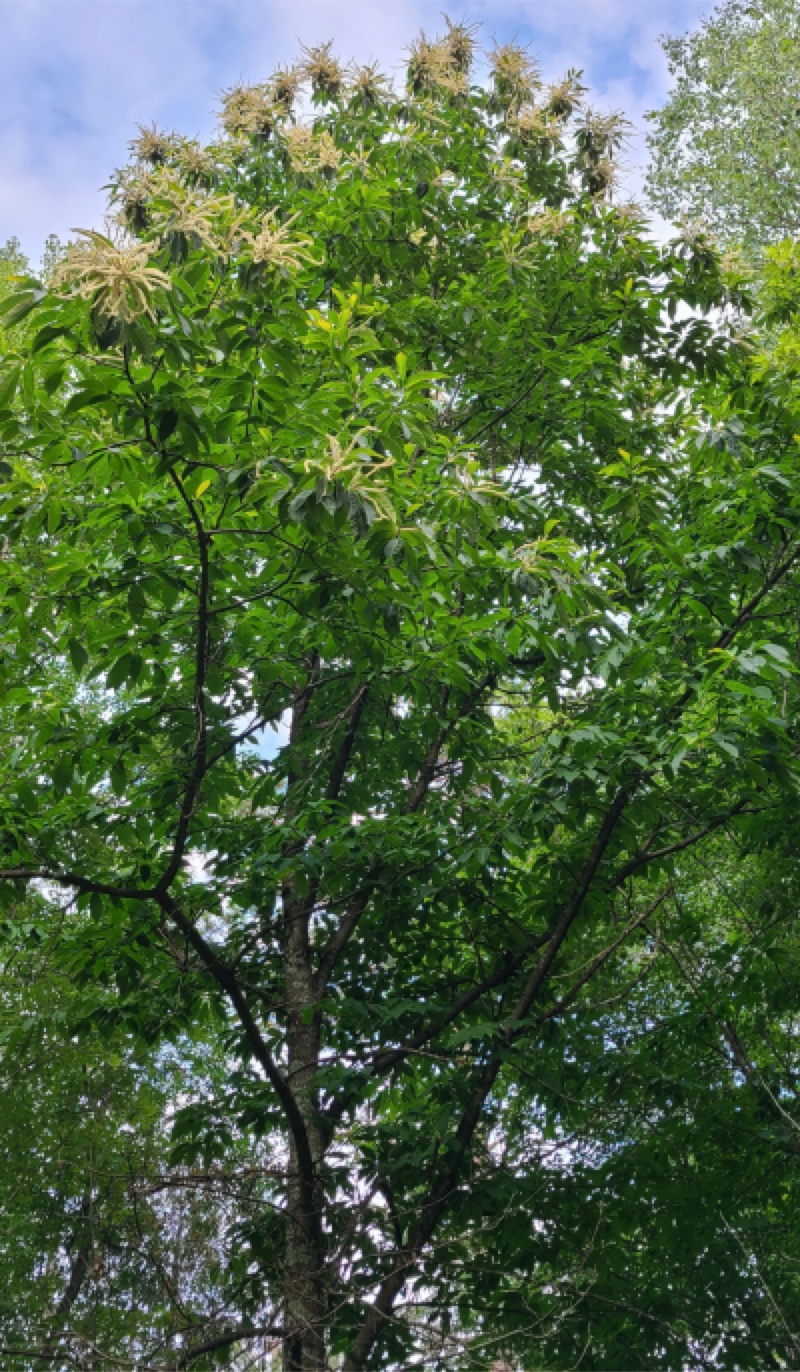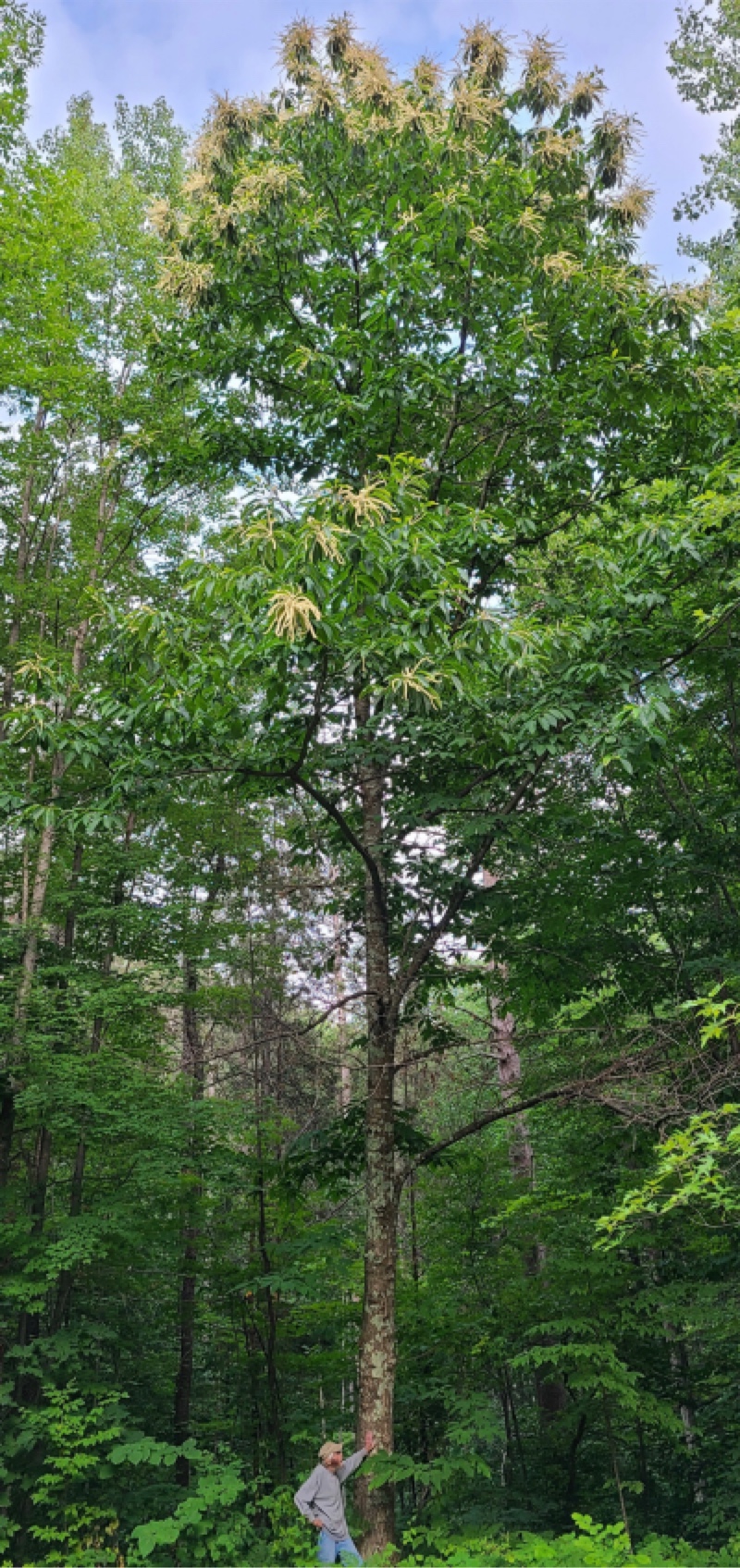|
Mike Heim's Tertiary Rewilding in Northern Wisconsin
Pt. 2: Ginkgo, Metasequoia, Taxodium, Shortia and more ...
Hayward, Wisconsin
Click for Pt. 1 on Florida Torreya and Florida Yew plantings
My name is Michael Heim and I am addicted to growing all kinds of odd and interesting plants outdoors. I'm curious to find out if they can handle our
harsh climatic conditions here in (brrrr!) northern Wisconsin in what used to be USDA Zone 3, but is now Zone 4, although wild swings in the weather do seem to be more common now.
One of my favorite pastimes is attempting the rewilding of plants which
used to grow in northern North America during the Tertiary Period,
but for whatever reason went extinct with the arrival of the Pleistocene,
hanging on in other parts of the world such as Asia.
I've been interested in fossil plant life ever since as a kid my family and I would go on regular Sunday excursions to the strip mines south of Chicago looking for fossils from the long-vanished world of the Coal Age, when Illinois was near the equator and attached to Europe. Many years later I was privileged to go on a university expedition to western North Dakota to collect the remains of a 60 million year old forest. The single layer of deciduous tree leaves, seeds, and twigs had apparently been torn off in a storm and deposited in a pond or lake having abundant cattails.
In attempting to grow their nearest living relatives — e.g. Ginkgo biloba, Taxodium distichum, Cercidiphyllum
japonicum, Pterocarya rhoifolia — I discovered that all were extremely
cold-hardy.
Now, inevitably when one sees reconstructions of prehistoric ecosystems in books, they are portrayed as tropical to subtropical, unless of
course they are of the 'Ice Age'. Never, for instance, have I seen a January landscape of North Dakota, some sixty million years ago. So here then is a topic sorely neglected by paleontologists and paleoecologists: the winter survival of plants and animals in the distant past at temperatures which at times likely fell well below zero F.
As you can tell, I'm particularly interested in prehistoric ecology and environments ...
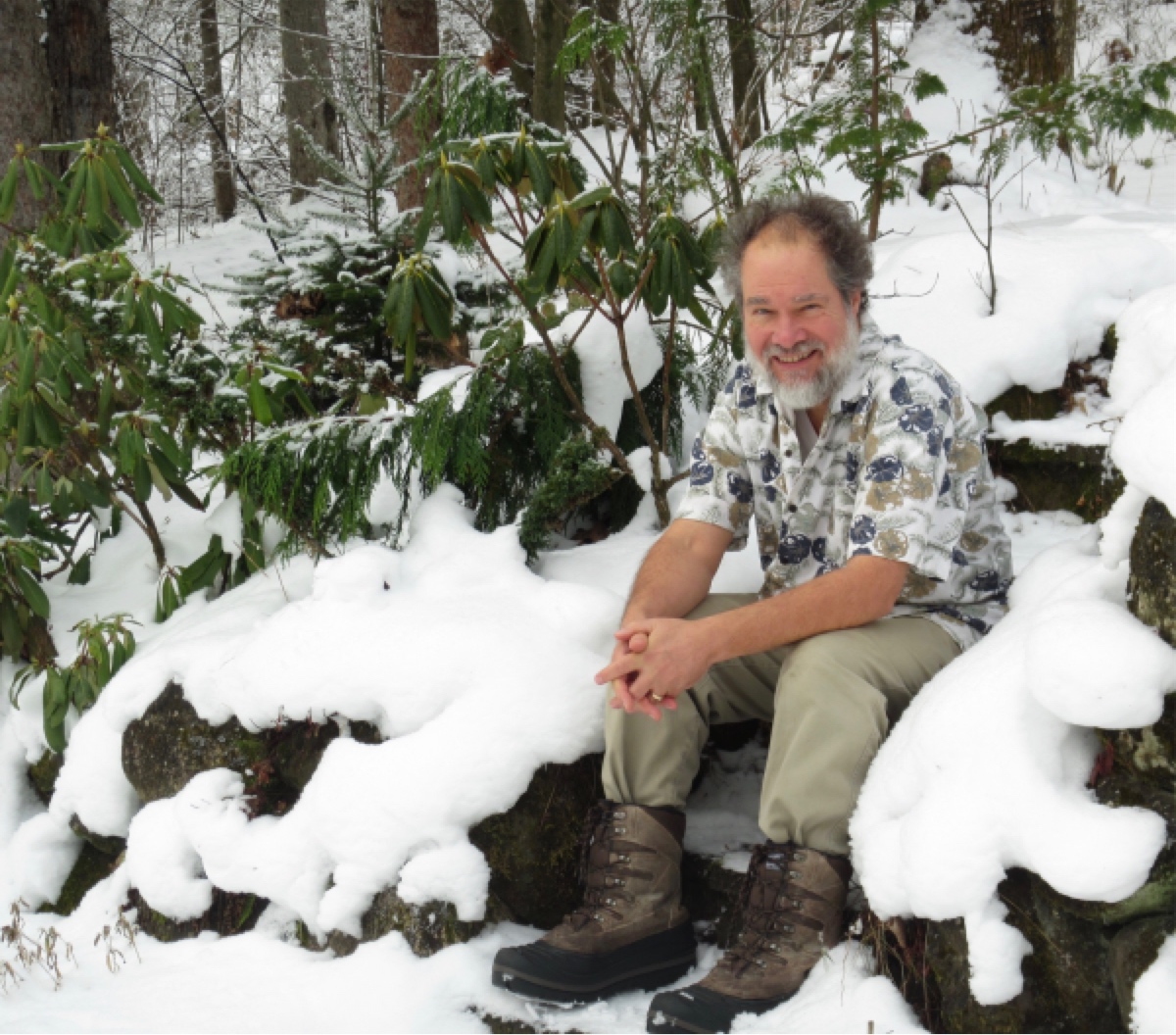 |
|
Mike Heim in March 2017. He's a University of Minnesota horticulture grad and teaches science at a local tribal high school.
Torreya taxifolia, along with Florida Yew, are two of the species he surmises lived in Wisconsin prior to the climatic cooling at the onset of the Pliocene (about 5 million years ago), which was then followed by the glaciation of the Pleistocene.
"My students and I are working on a long-term project in conjunction with the National Arboretum. It involves the naturalization of box huckleberry, a rare
plant at present which likely thrived on the sandstone of northern Wisconsin during the Tertiary. (See my article "Return of the Ericads: Students Dig and Reestablish a Prehistoric Species".)
|
This webpage is Part 2 in his series.
Part 1 reports on his work with just the focal species of Torreya Guardians (and its rare cousin, Florida yew, which is also limited to the Apalachicola region of n. Florida).
REPORTS IN CHRONOLOGICAL ORDER
2010
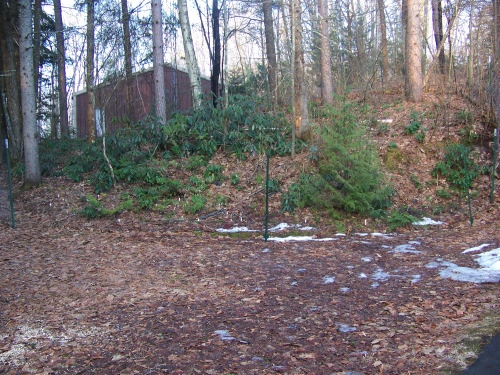
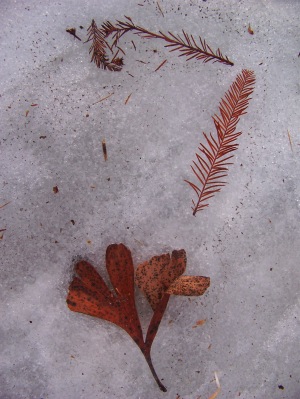
Above left: The main planting
location, a mixed forest with acidic sandy loam soil.
Above right: Tertiary winter. This resembles Paleocene fossil slabs that I collected in western North Dakota.
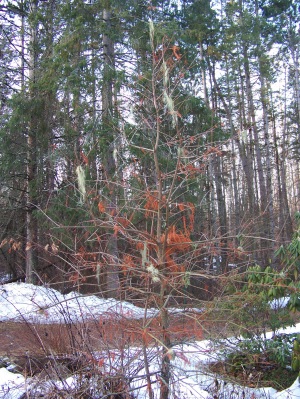
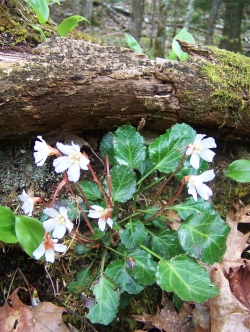
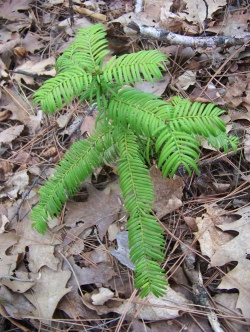
ABOVE LEFT: Eight-foot tall deciduous Taxodium, which I planted, in our front yard. It is now covered in Usnea and other lichens which resemble Spanish-moss.
CENTER: Shortia and Cephalotaxus (RIGHT) seem to thrive in this Wisconsin habitat.
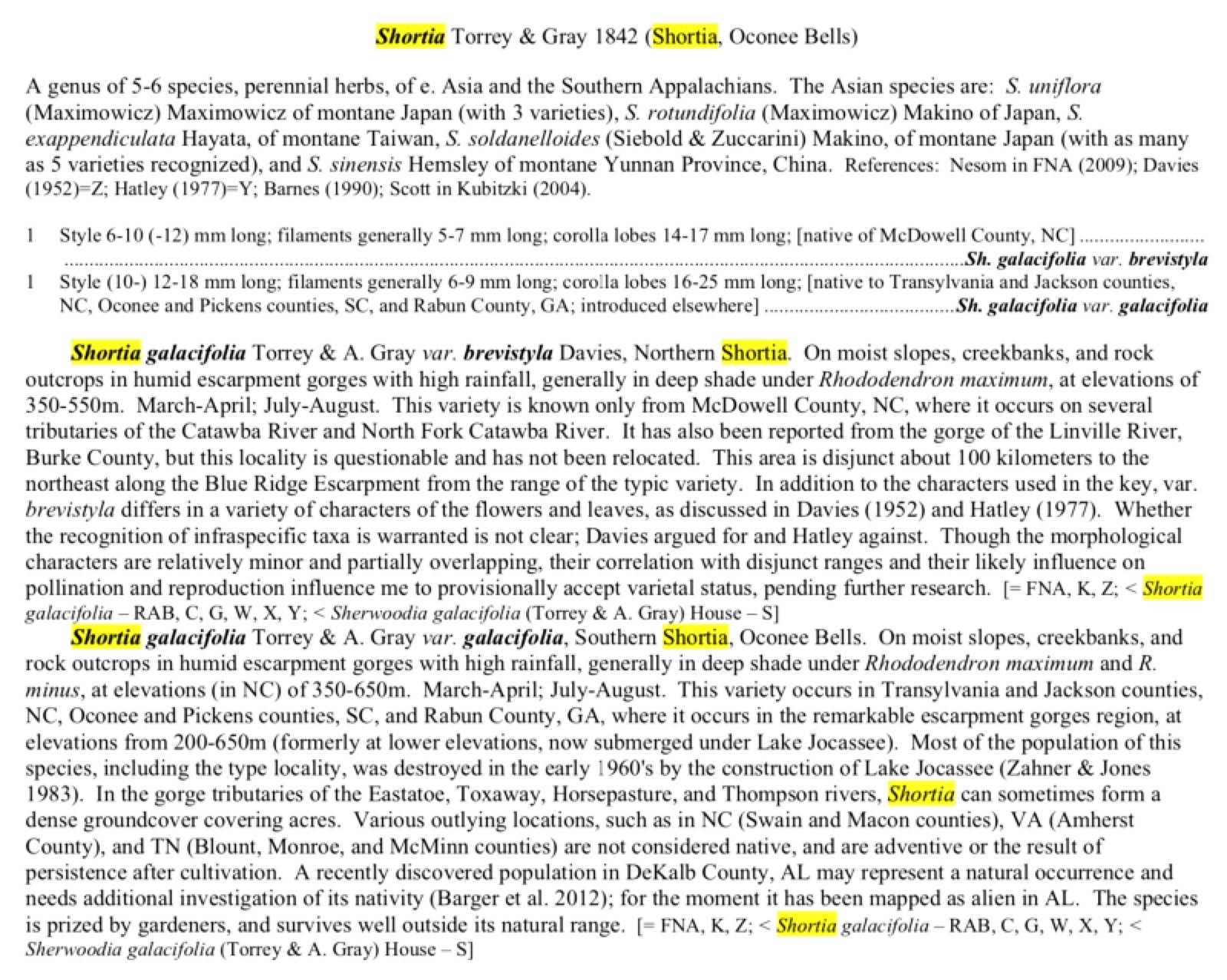
ABOVE: From "Flora of the southern and mid-Atlantic states, working draft of May 2015", by A.S. Weakley, May 2015, UNC Herbarium, p. 802.
2017
• MARCH 14, 2017 email from Michael Heim:
Photos here are some of the other species that I am researching thru assisted migration here in northern Wisconsin in order to determine their Miocene/early Pliocene ranges. The greatest hurdle has not been winter cold, but an artificially high, sustained deer population.
This past summer my daughter Karen and I took a camping trip to the Red River Gorge area of central Kentucky. My goal was to study the ecology of an upland forest containing Tertiary relict species which have not reached Wisconsin during our post-glacial times. The woods there and in our part of northern Wisconsin are both growing on sandstone bedrock, so the forest composition is a virtually identical white pine/red oak/ red maple/hemlock type. That was startling to see.
What I found even more fascinating were the additional species, including bigleaf magnolia (Magnolia macrophylla) and American holly (Ilex opaca).
Has our postglacial climate precluded them from returning to Wisconsin or could it be that unfavorable edaphic (soil) conditions and/or frequent anthropogenic fires in the intervening regions have stalled their range expansion?
Aiming to find out, I collected cuttings and some small seedlings to trial within the same woodland exclosure back home where Torreya taxifolia and Taxus floridana are growing.
As of now (March 2017), the hollies look perfect, even though it has been an extraordinary winter here. On December 18th the temperature dropped to -25F with only several inches of snowcover. Heavy rainfalls resulted in the unprecedented disappearance of the snowpack in February. Since then the bare ground and uncovered plants have had to endure temperature extremes seesawing back and forth between -5F to almost 60f and back again. The sustained strong damaging winds are also unusual.
Assisted Migration of Appalachian Species to Wisconsin
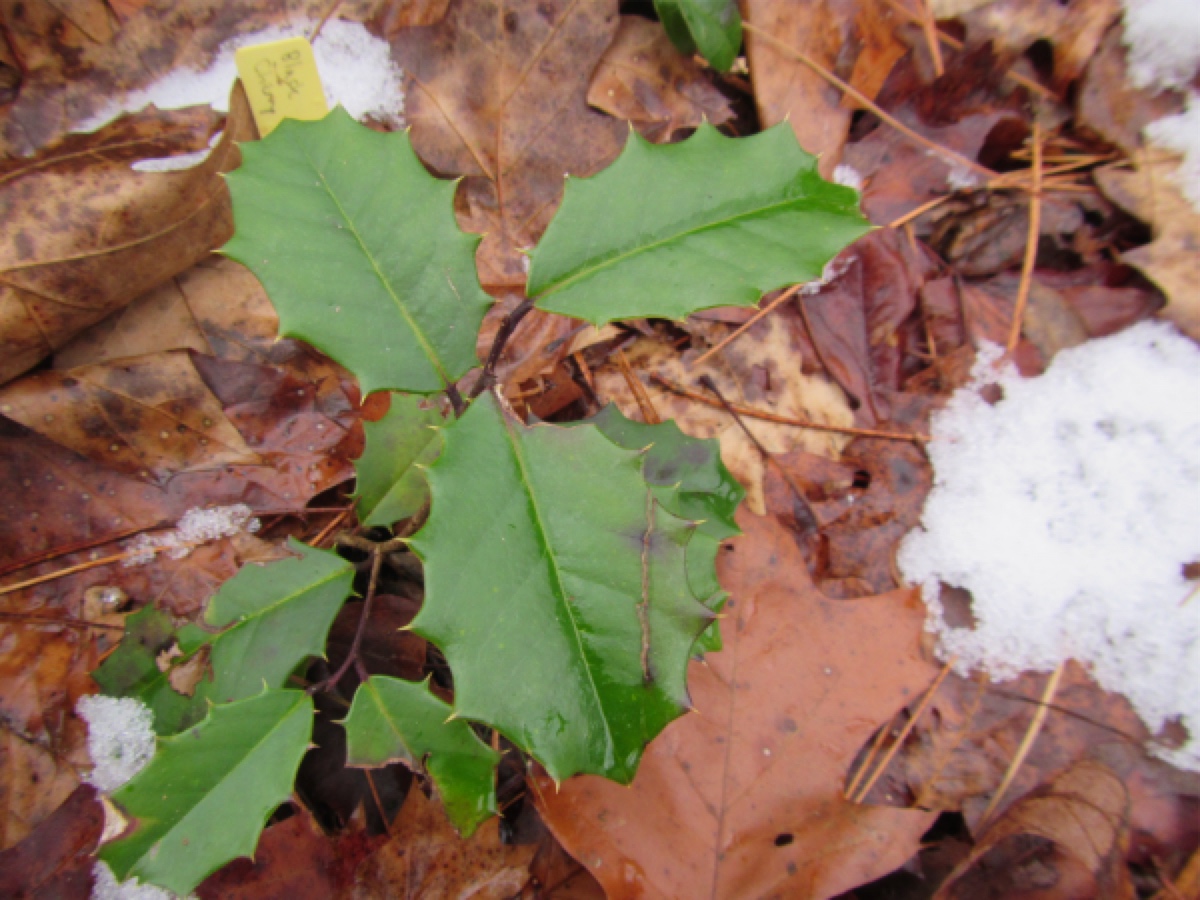
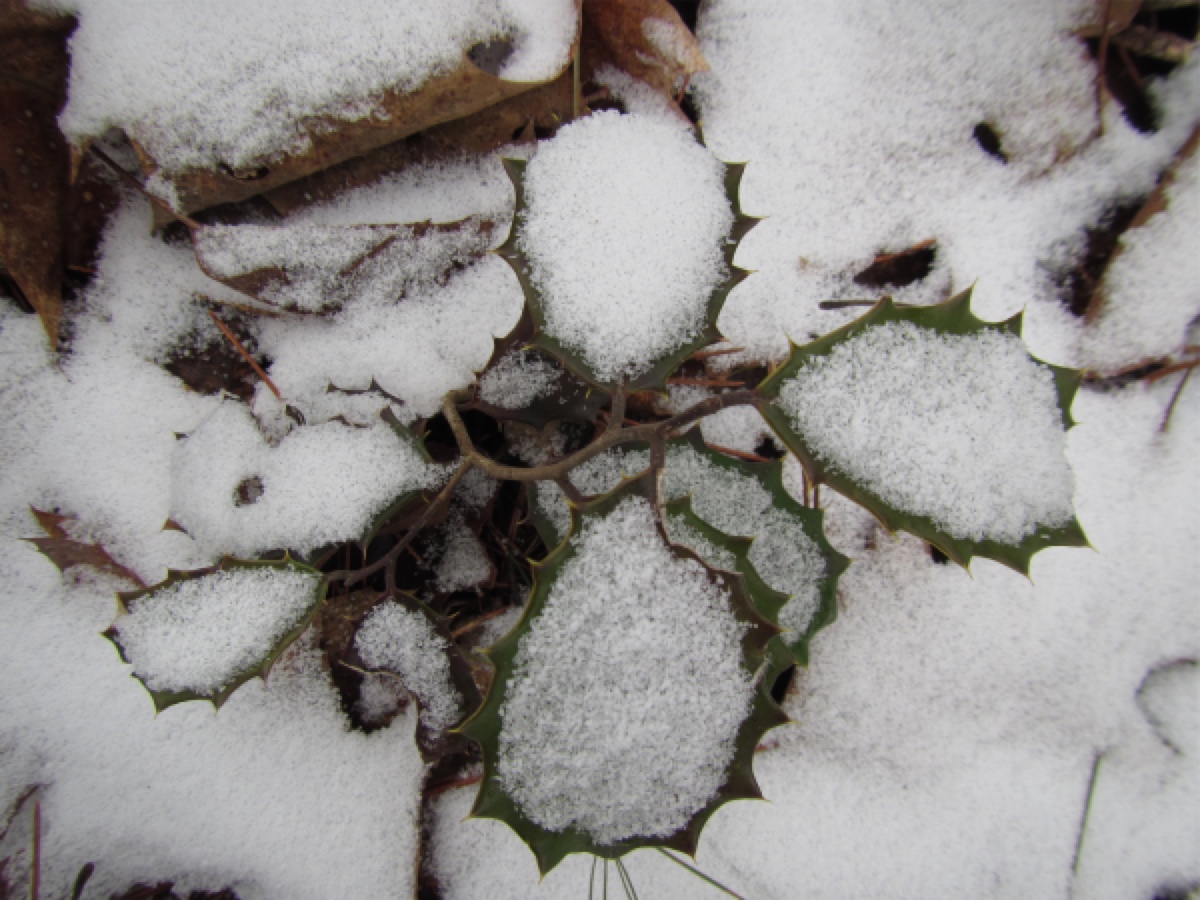
ABOVE: Summer 2016 I planted two holly seedlings (Ilex opaca) from central Kentucky. This represents an assisted migration poleward of about X miles. (photos March 2017).
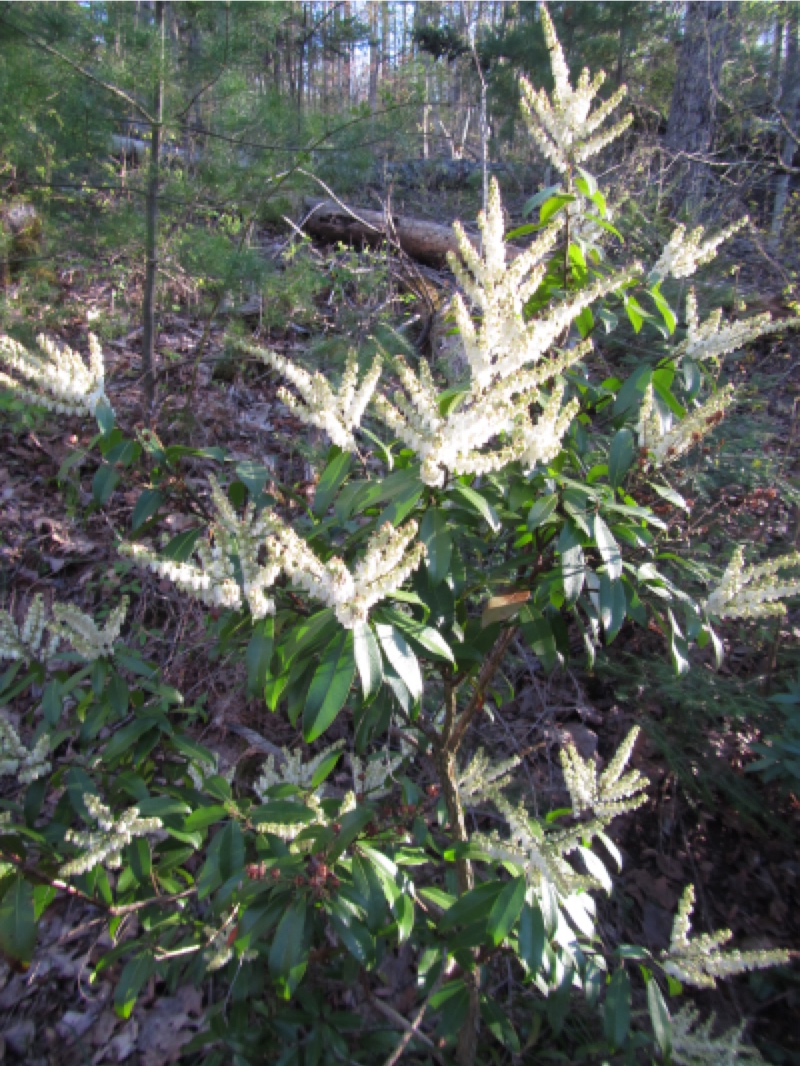
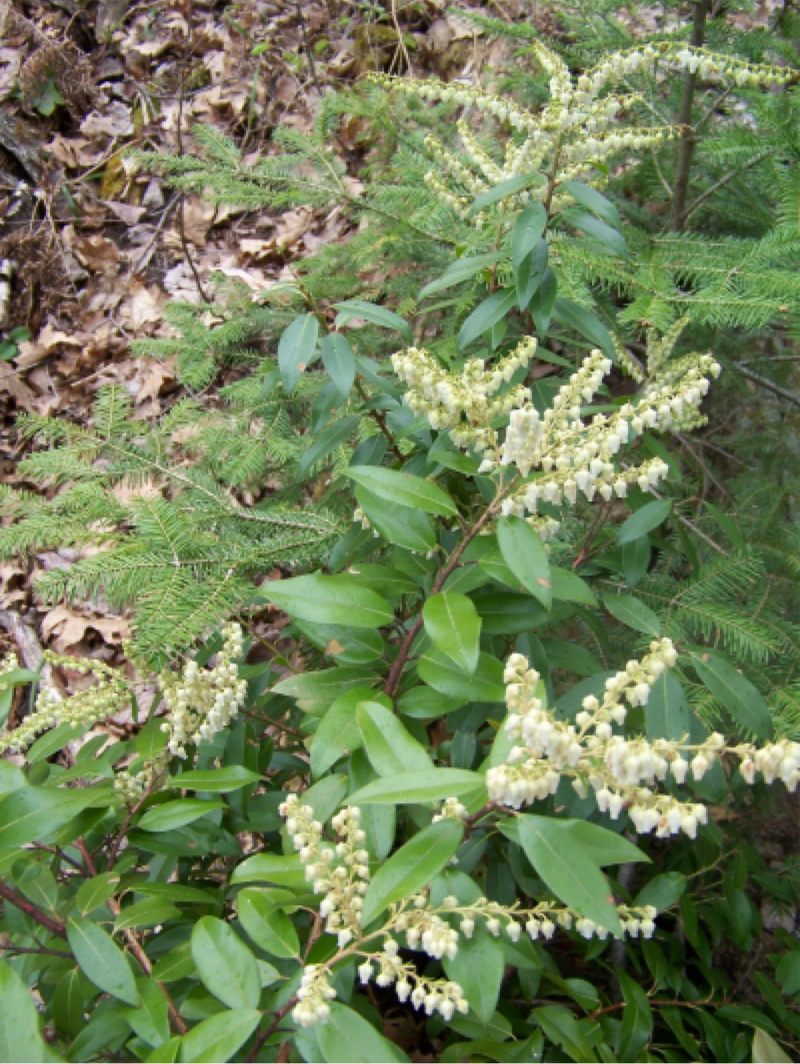

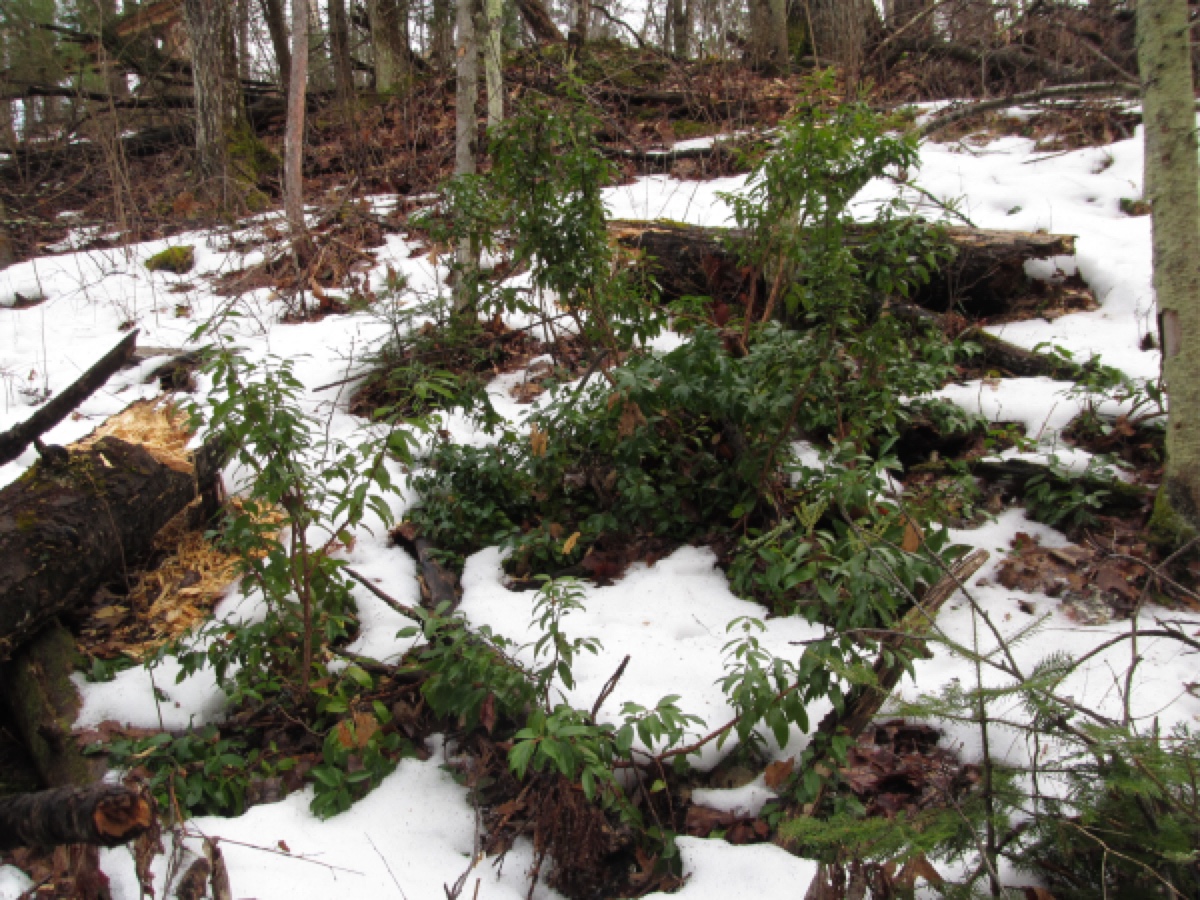 |
|
Pieris floribunda is native to the southern Appalachians, yet they are thriving on my land in northern Wisconsin.
More photos are below in the December 2022 and March 2024 entries.
|
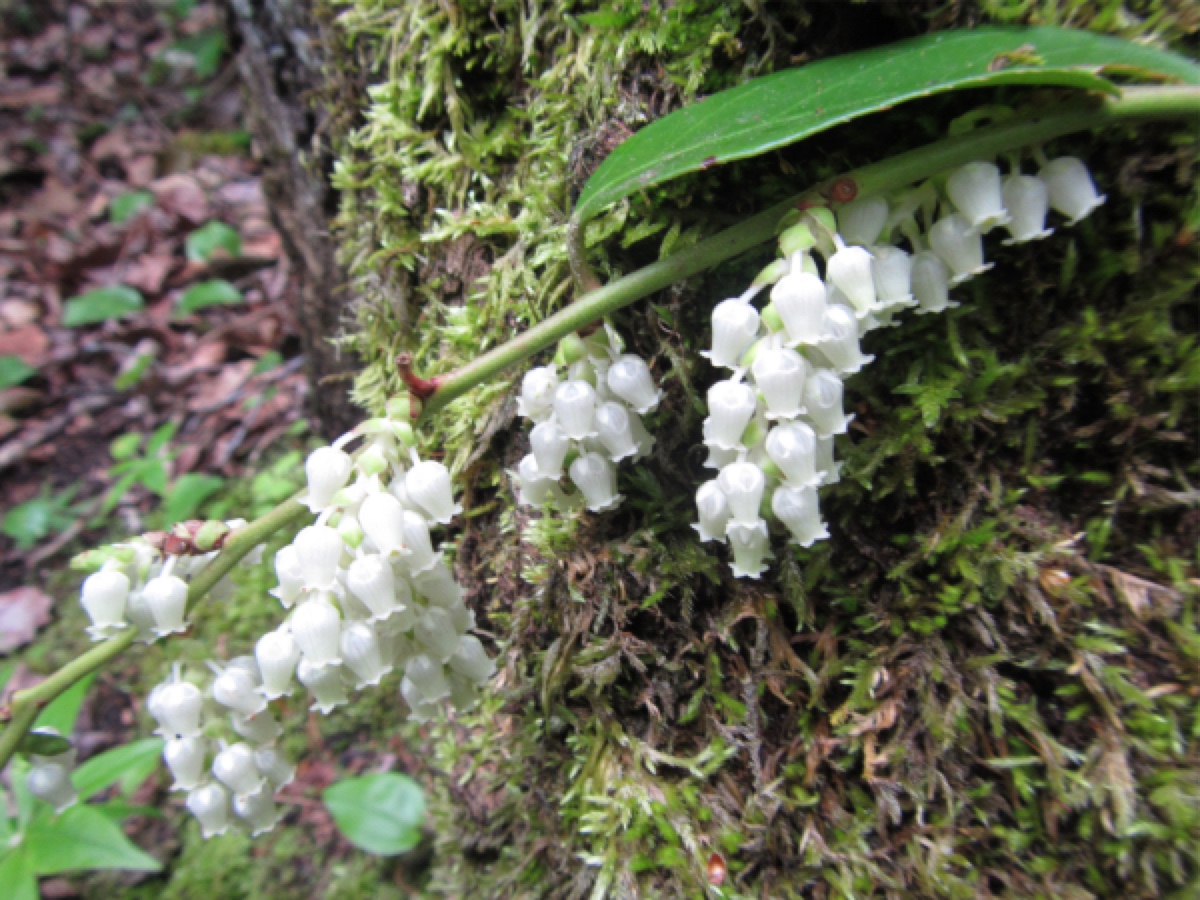
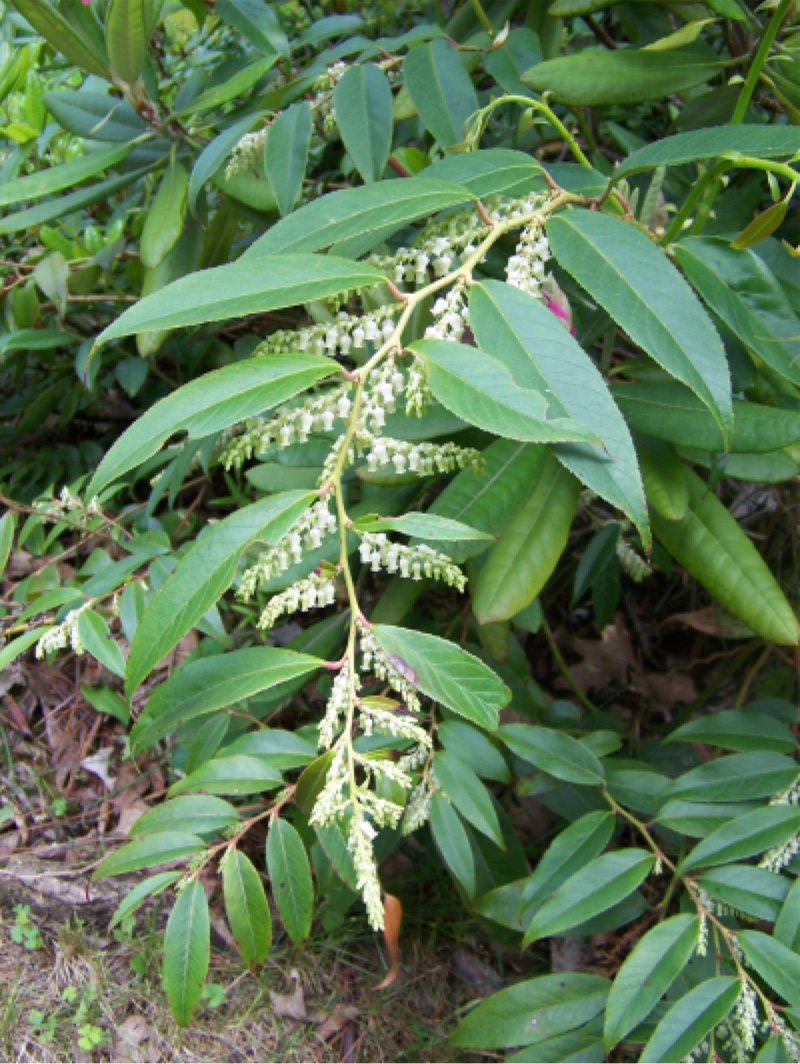
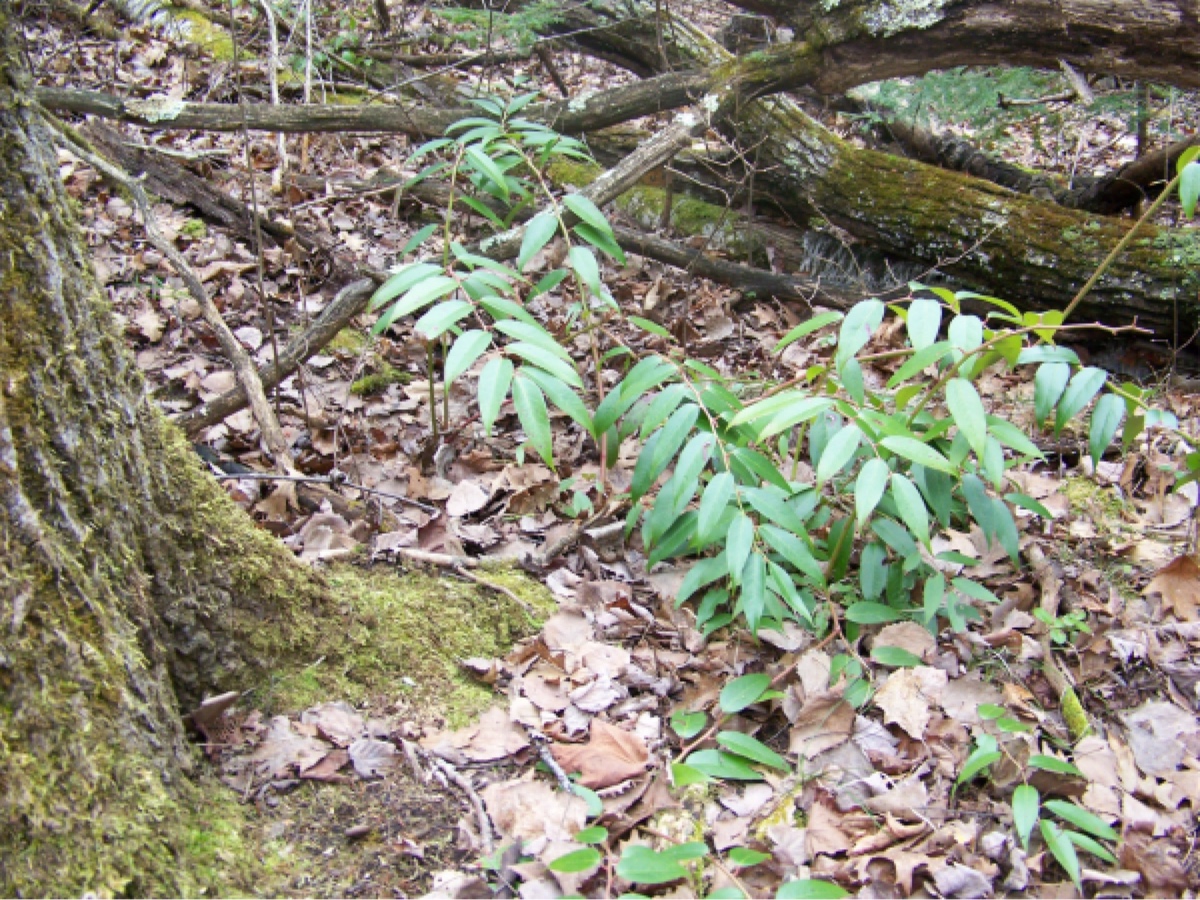 |
|
Leucothoe fontanesiana is native to WHERE, yet they are thriving on my land in northern Wisconsin, which is an assisted migration of about X miles poleward.
I collected these specimens WHEN from WHERE.
|
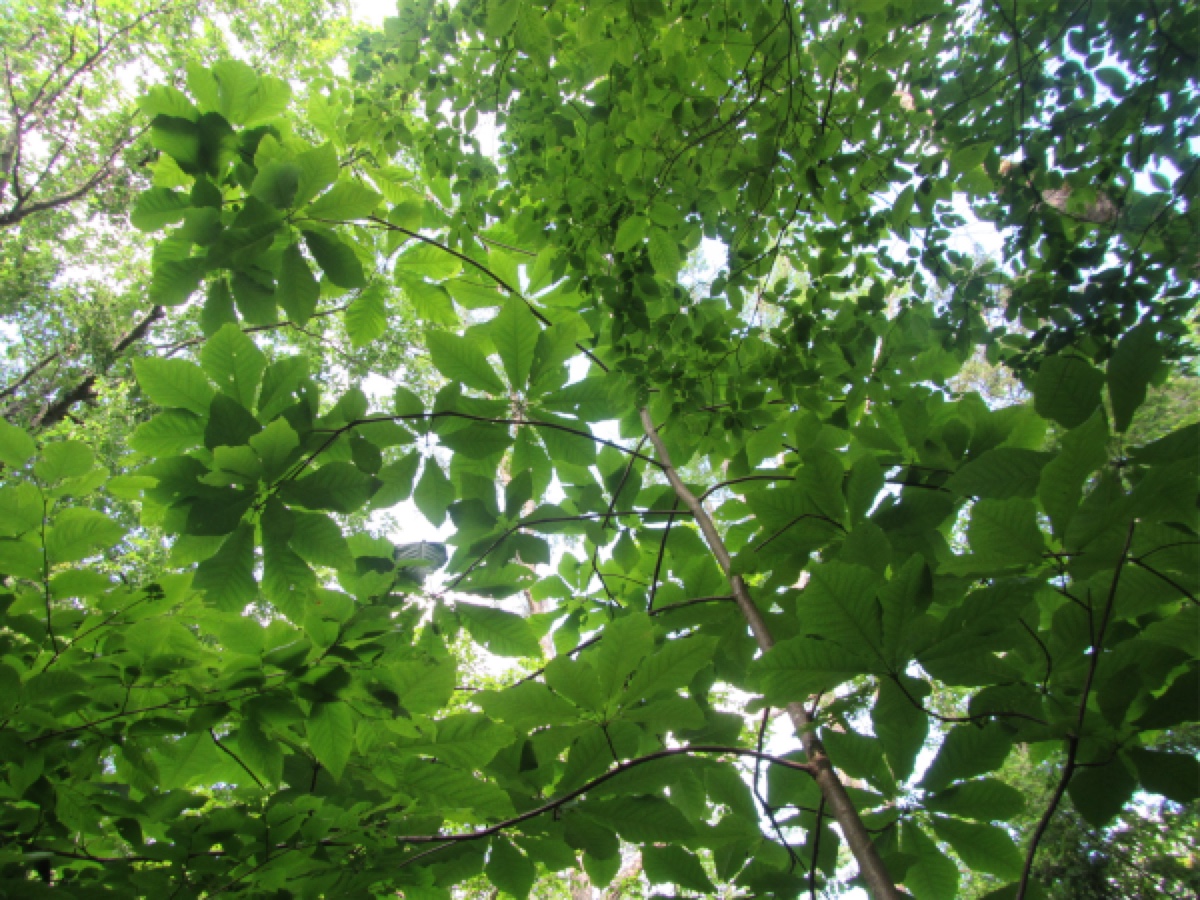
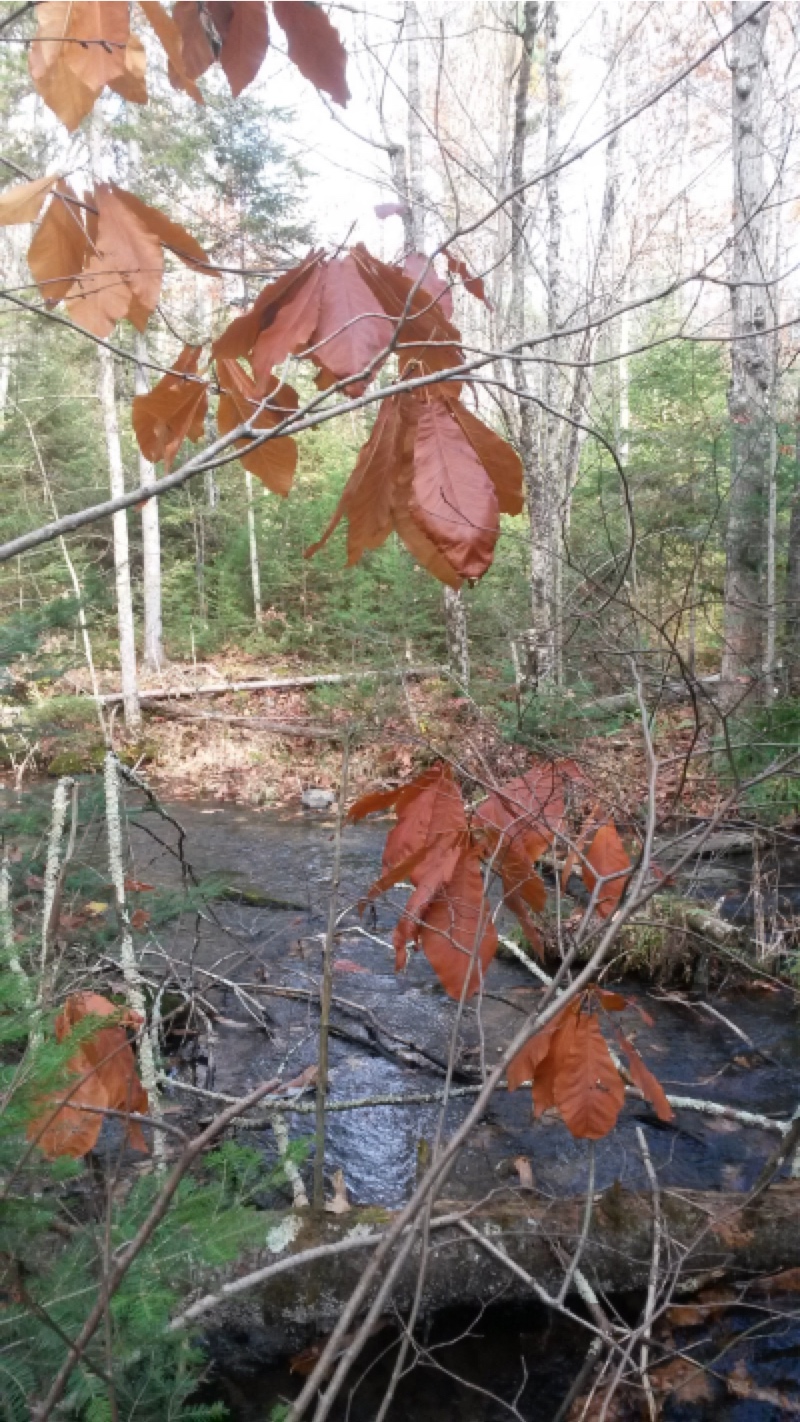
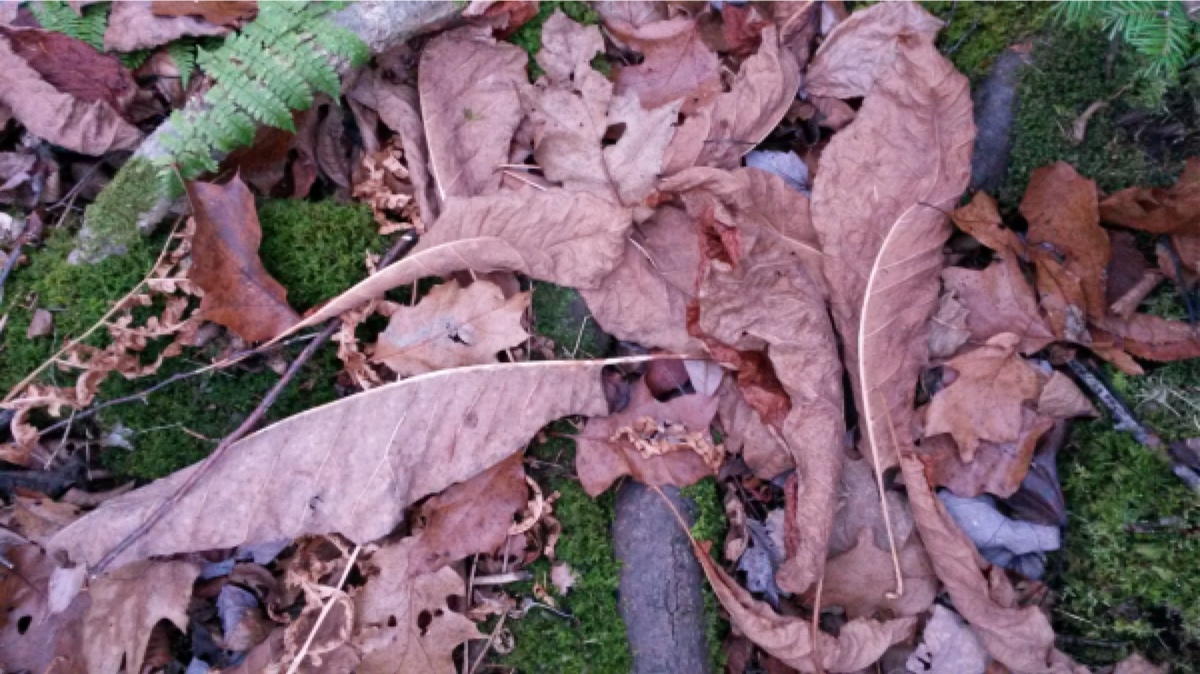 |
|
Magnolia fraseri is native to WHERE, yet they are thriving on my land in northern Wisconsin, which is an assisted migration of about X miles poleward.
I collected these specimens WHEN from WHERE.
|
Assisted Migration from Asia of Tertiary Species to Wisconsin
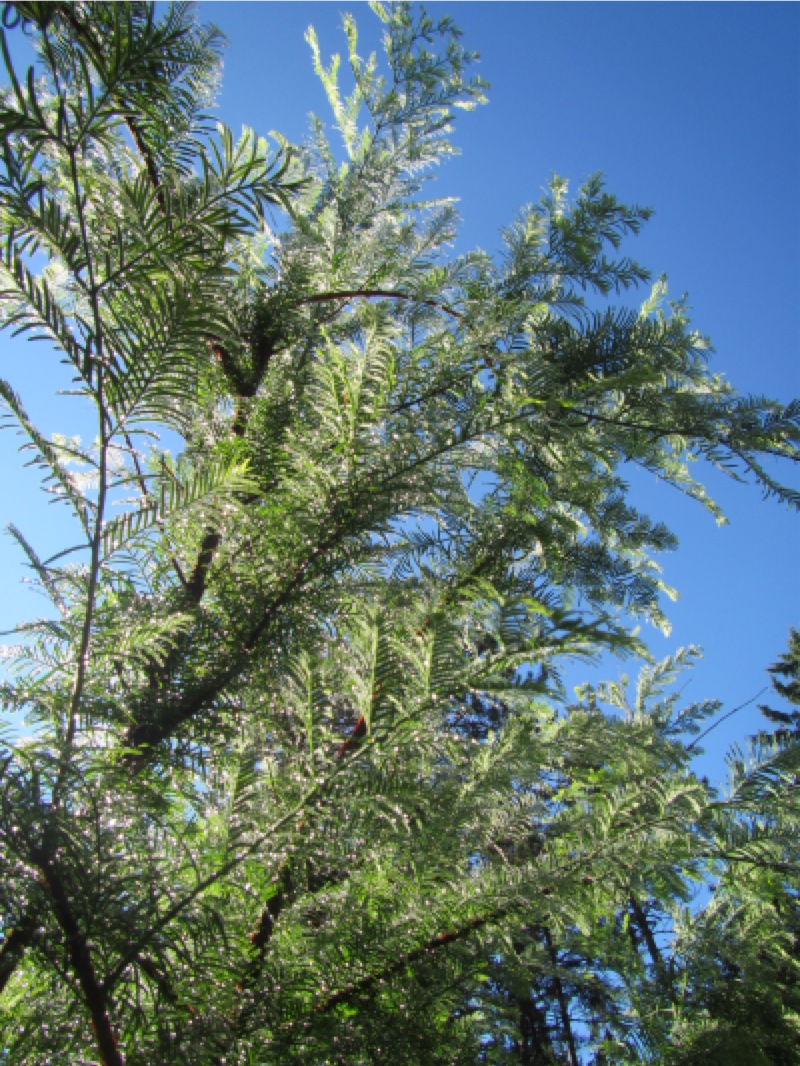
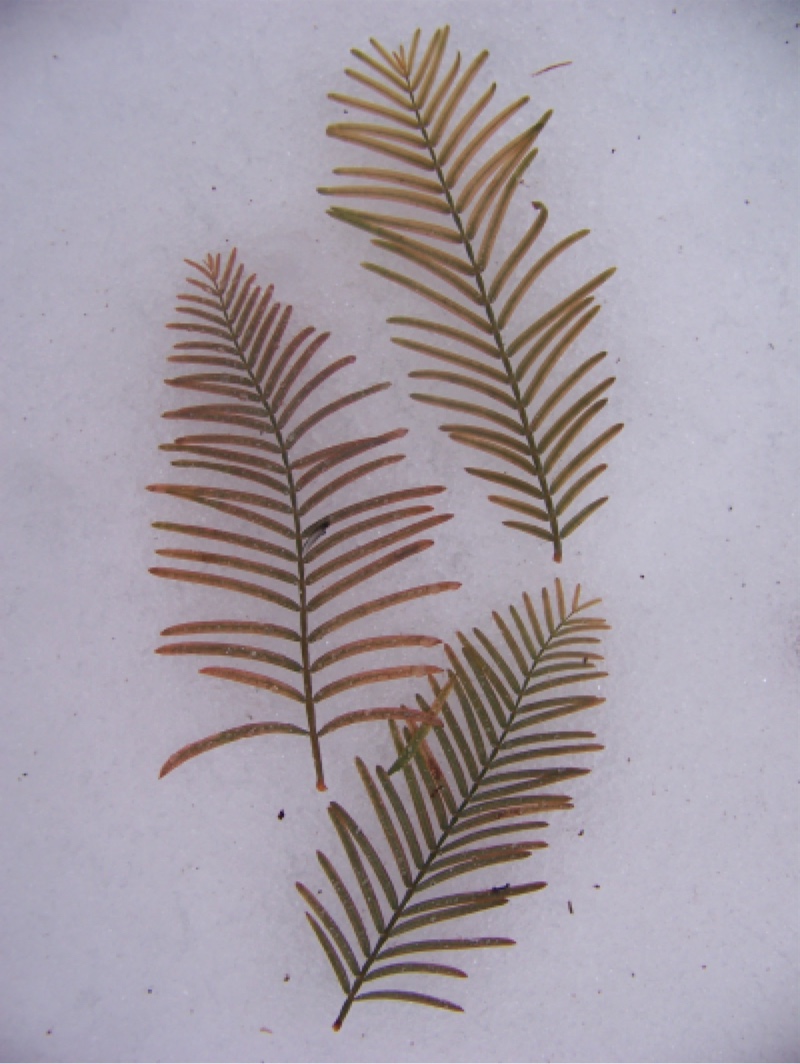
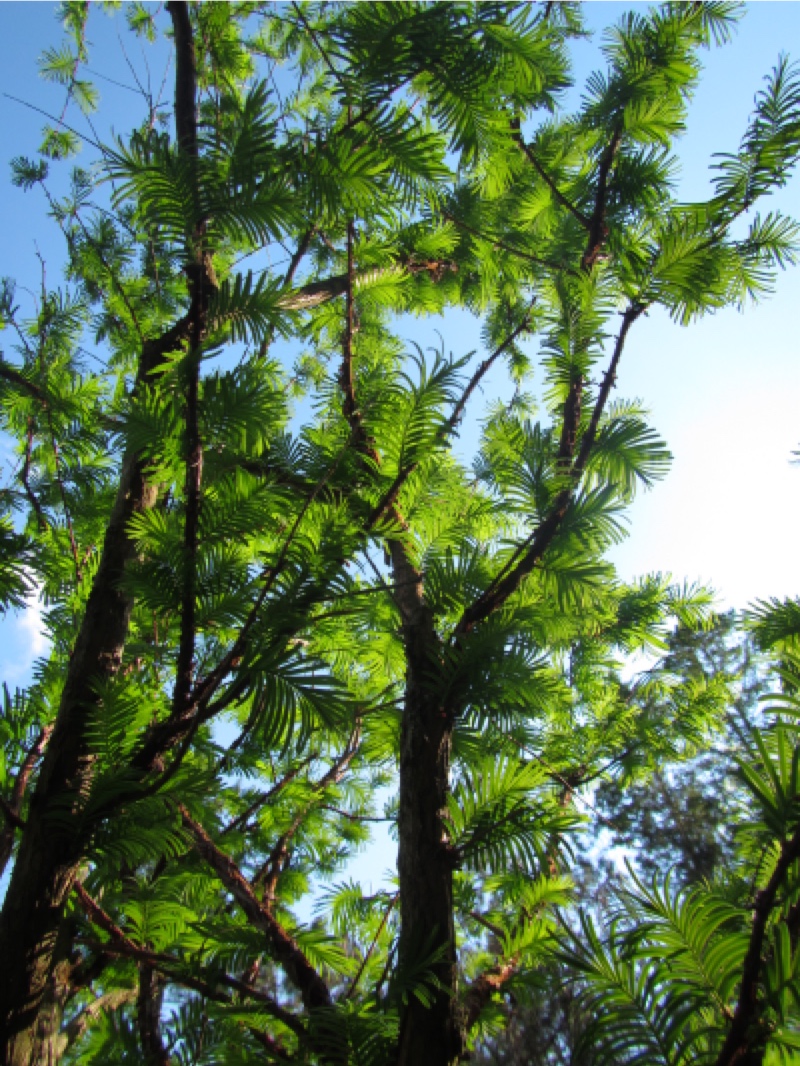
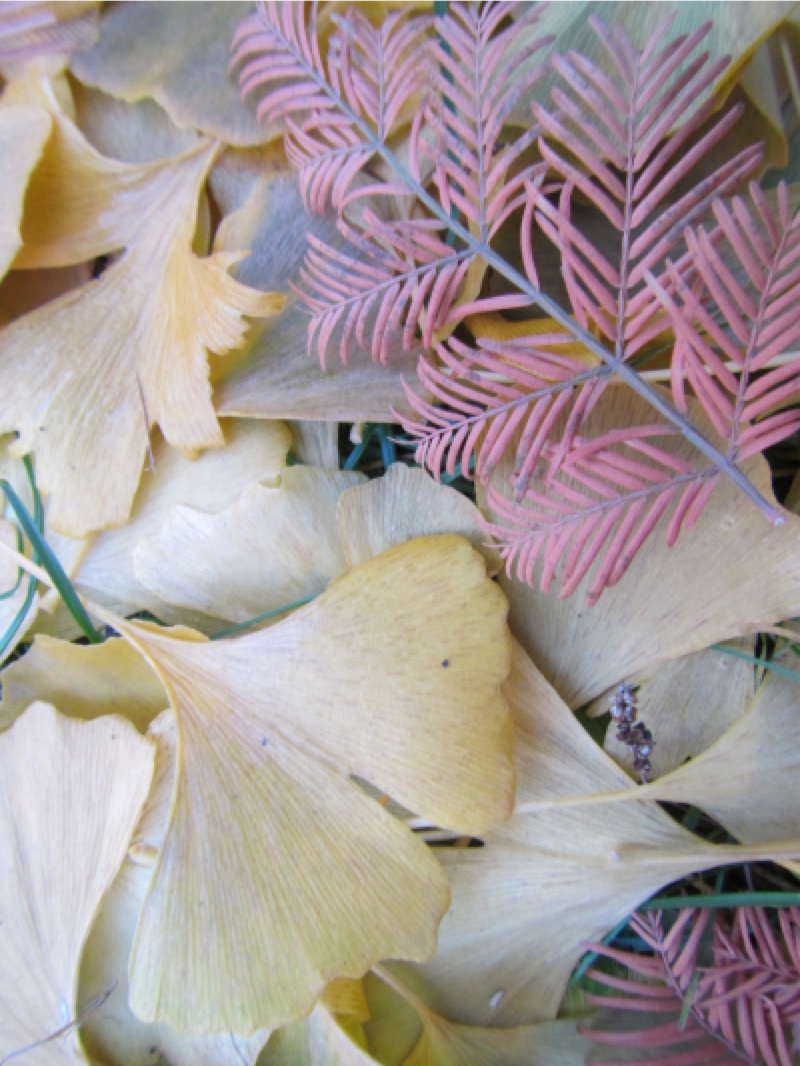 |
|
Tertiary relicts Metasequoia and Ginkgo
are both thriving in Hayward, Wisconsin. The fossil record in North America shows that both thrived here until at or near the end of the Tertiary.
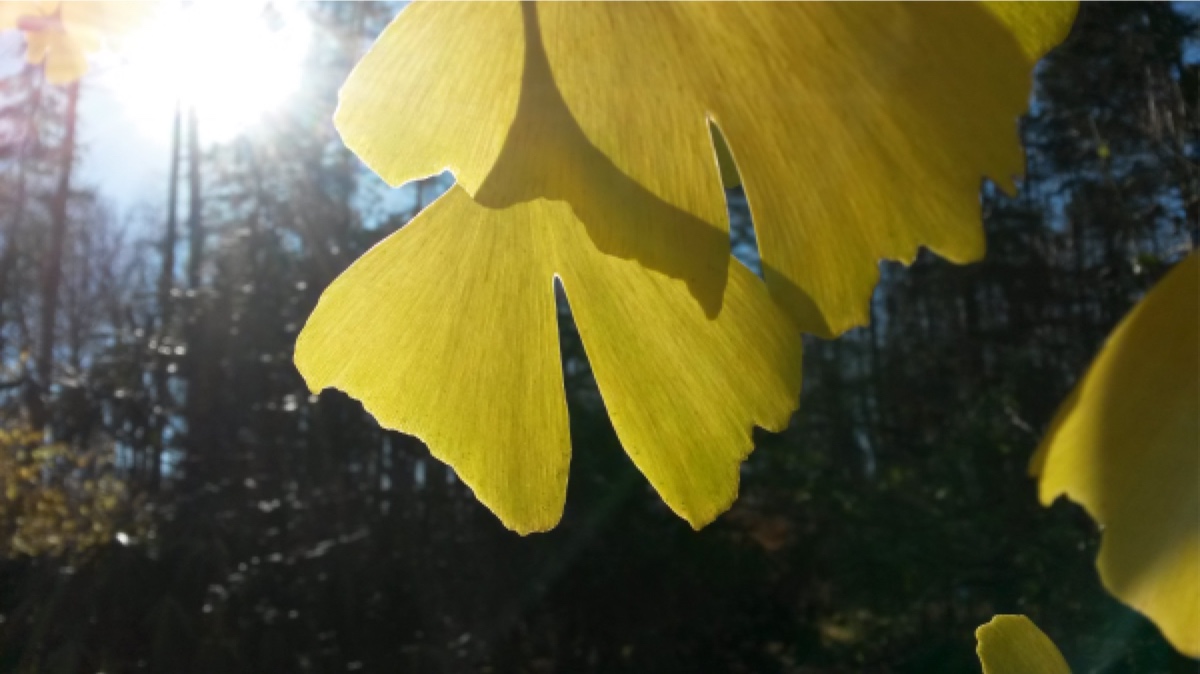 |
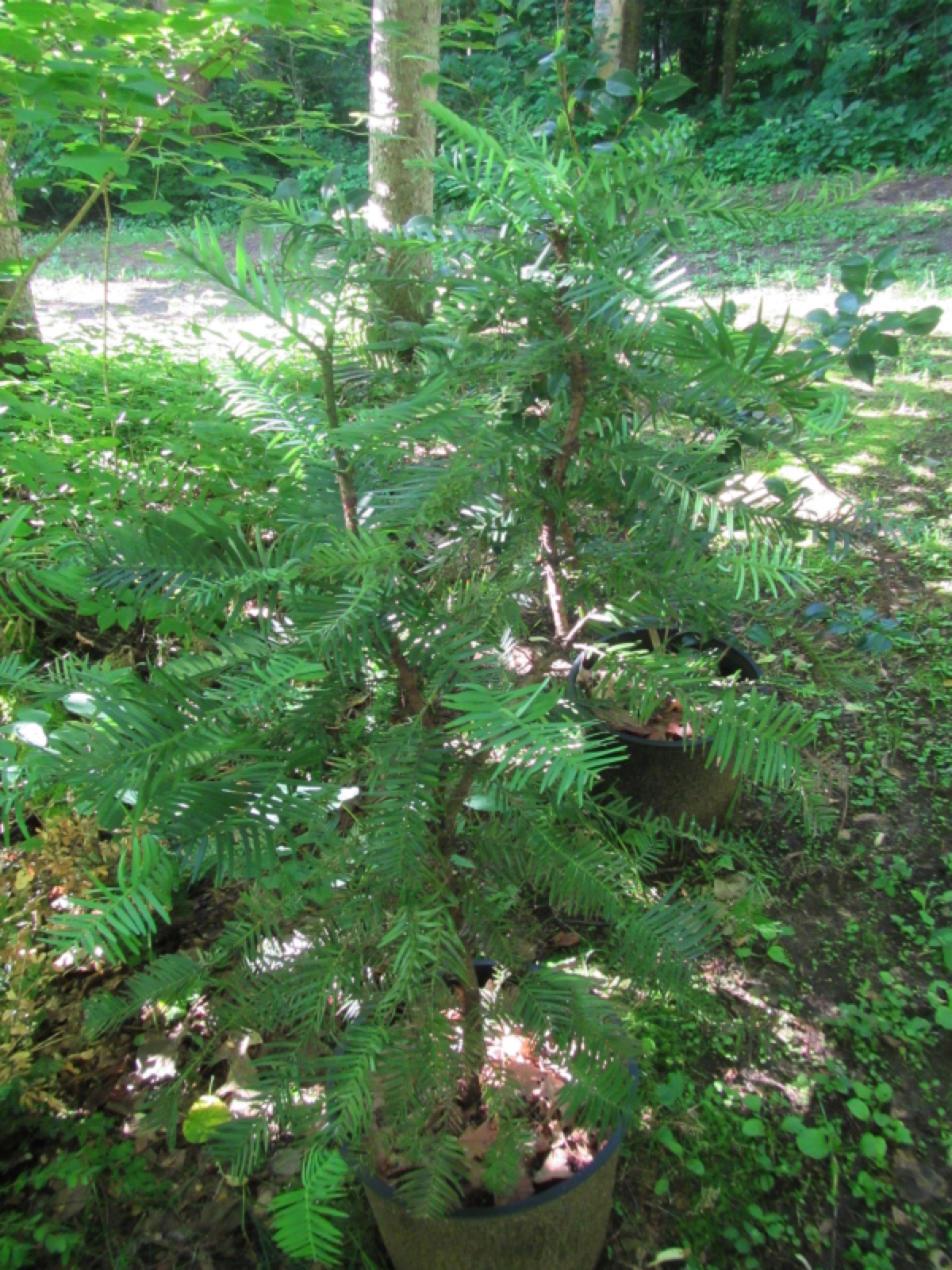 |
|
Australia's relict WOLLEMIA NOBILIS
July 2019
"Photo of my potted Wollemia nobilis, which I leave out in the autumn until the temperature drops to 10F or so. It looks nice with snow on it. I suspect that this extremely rare Mesozoic relict species would thrive if planted in the sandstone ravine of the Shoal Sanctuary in northwestern Florida, as this is the same as its habitat in the wild. Mine is thriving in glacial sand."
EDITOR'S NOTE: Because it is apparently unusual to achieve vertical growth leaders from a lateral branch cutting of Wollemia, I asked Mike Heim about whether his Wollemia did indeed start from a cutting He replied: "Both were rooted lateral cuttings that a nurseryman in BC sent me. It just decided to reach for the sky." He also confirmed that, at least as of 2020, he had never attempted to subject this potted Wollemia to a Wisconsin winter; he always moves it indoors.
|
UPDATE 2021 ON BALD CYPRESS (TAXODIUM):
... Southern Illinois and Indiana are the current northernmost range limit of baldcypress forests. Most are found there in the pre-glacial channel of the Ohio River. Before the Ice Age this species grew all the way into Alberta, so its cold-hardiness should not be in question, although most people tend to associate it with the Gulf Coast and Florida. One third of the baldcypress trees at the Minnesota Landscape Arboretum were uninjured at -43F. Are some of the Illinois trees so unbelievably cold tolerant because at some time during the past it got this cold in southern Illinois or is this due to gene flow from the formerly extensive, but now extinct far northern populations?
My baldcypresses have done very well here in the cold North, with some exceptions. As with the arboretum trees, they vary in hardiness from a single packet of seed. All were uninjured at -40 during February 2021. Some seedlings are now well over my head and can put on twenty inches of growth in a year. These are trees from wild-collected Illinois seed; seedlings from farther south, along with the related pondcypress, have not proven hardy. The seedlings overwinter best if planted out as second-year seedlings and tend not to survive if planted directly in water, but thrive in saturated soil. I have a grove of five trees thriving in a sphagnum bog. This was unexpected, as it is nowhere near the typical river bottom habitat of the species. Two of my thirty-inch tall trees growing in a beaver meadow were completely submerged for a full year after beaver rebuilt their dam. Once the dam was destroyed, the trees continued growing as if nothing had happened. According to the literature, they should have died.
As long as they receive plenty of light, baldcypresses are highly adaptable here regarding soil conditions, even thriving on sand if watered during drought. I understand that established trees are quite drought-tolerant. Deer will browse them in winter, but they recover very well the following growing season. My trees turn a beautiful russet-orange color in late October and hard frost in autumn does not injure their foliage. One tree was killed when its bark split off due to dehardening during an early spring heat wave and then freezing again, but the others were fine.
As one can tell from these photos that I took when they were young, baldcypresses are beautiful, elegant trees. I encourage you to plant them in our wetlands, not only to minimize the ecological disruption that may be caused by climate change and the emerald ash borer but, looking at the longer view, as rewilding a species which once graced our beautiful Northland and was wiped out by the last great climate change event, the Ice Age.
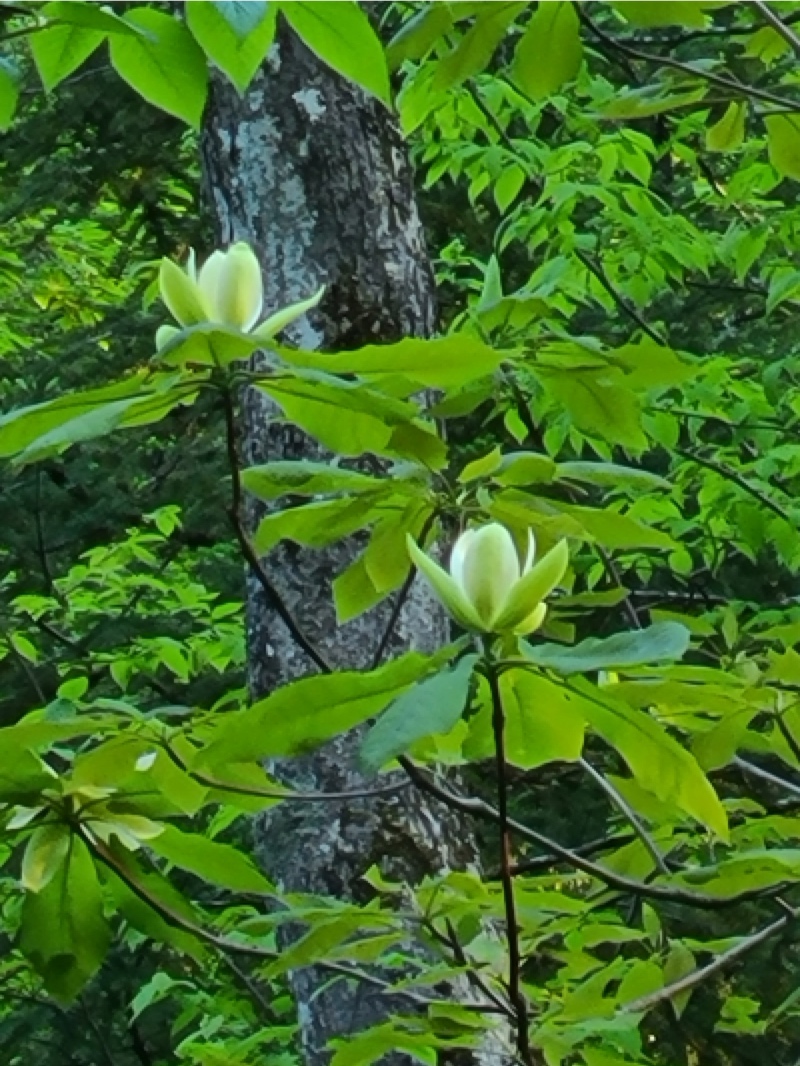 |
|
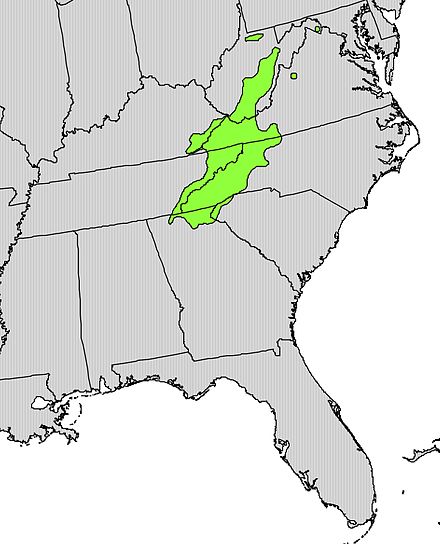 |
|
JUNE 2021
Michael Heim reports on his forest plantings in WISCONSIN:
LEFT: Magnolia fraseri in bloom along my creek after -40 degrees F. The flowers are so high up I had to zoom to them from about 50 ft. away on the other side of the creek.
NEAR LEFT: Map of native range of Magnolia frasieri.
|
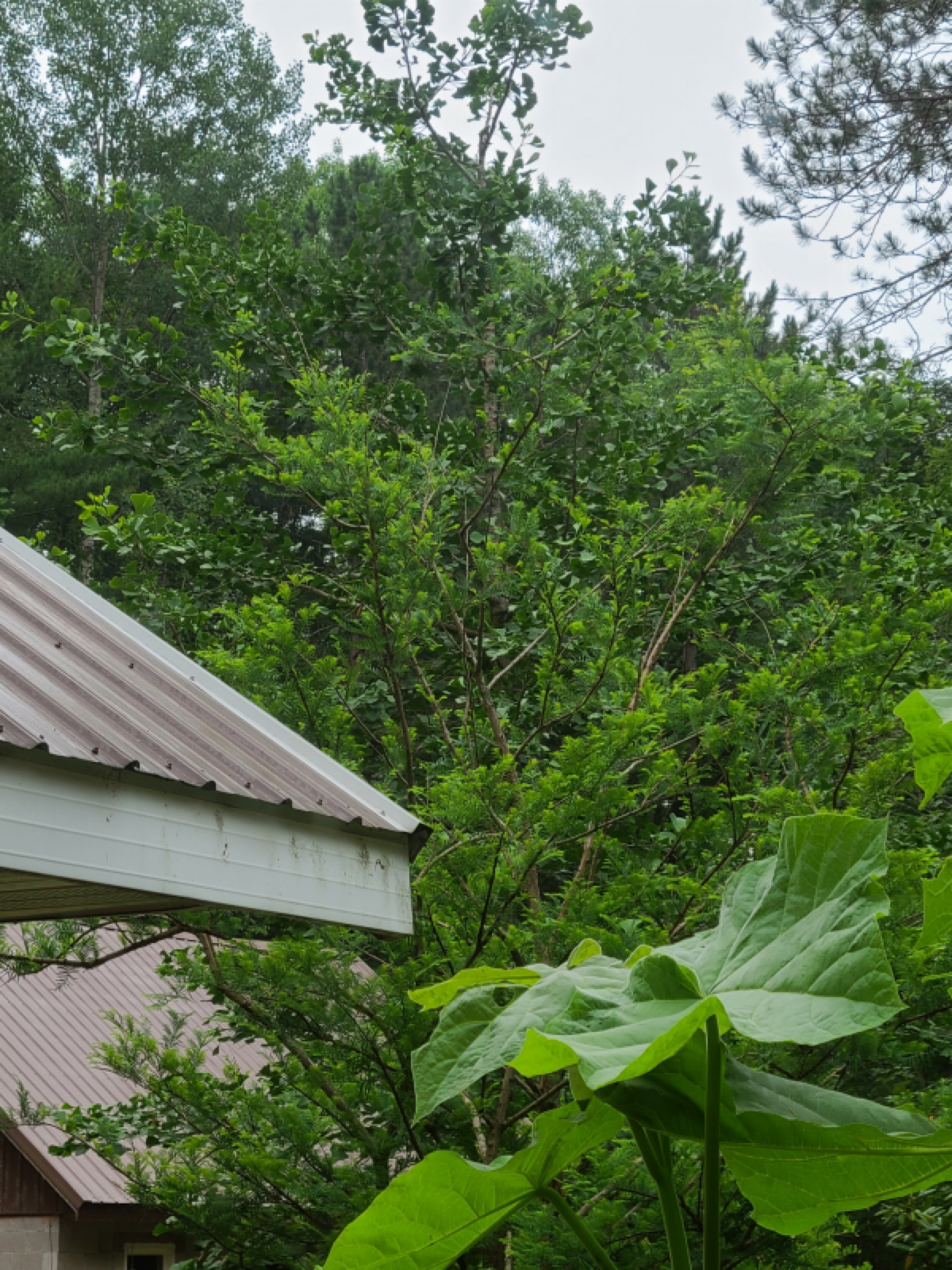 |
|
JULY 2021
LEFT: A lush Dawn Redwood (Metasequoia) in Mike Heim's yard, with a Ginkgo visible directly behind it.
|
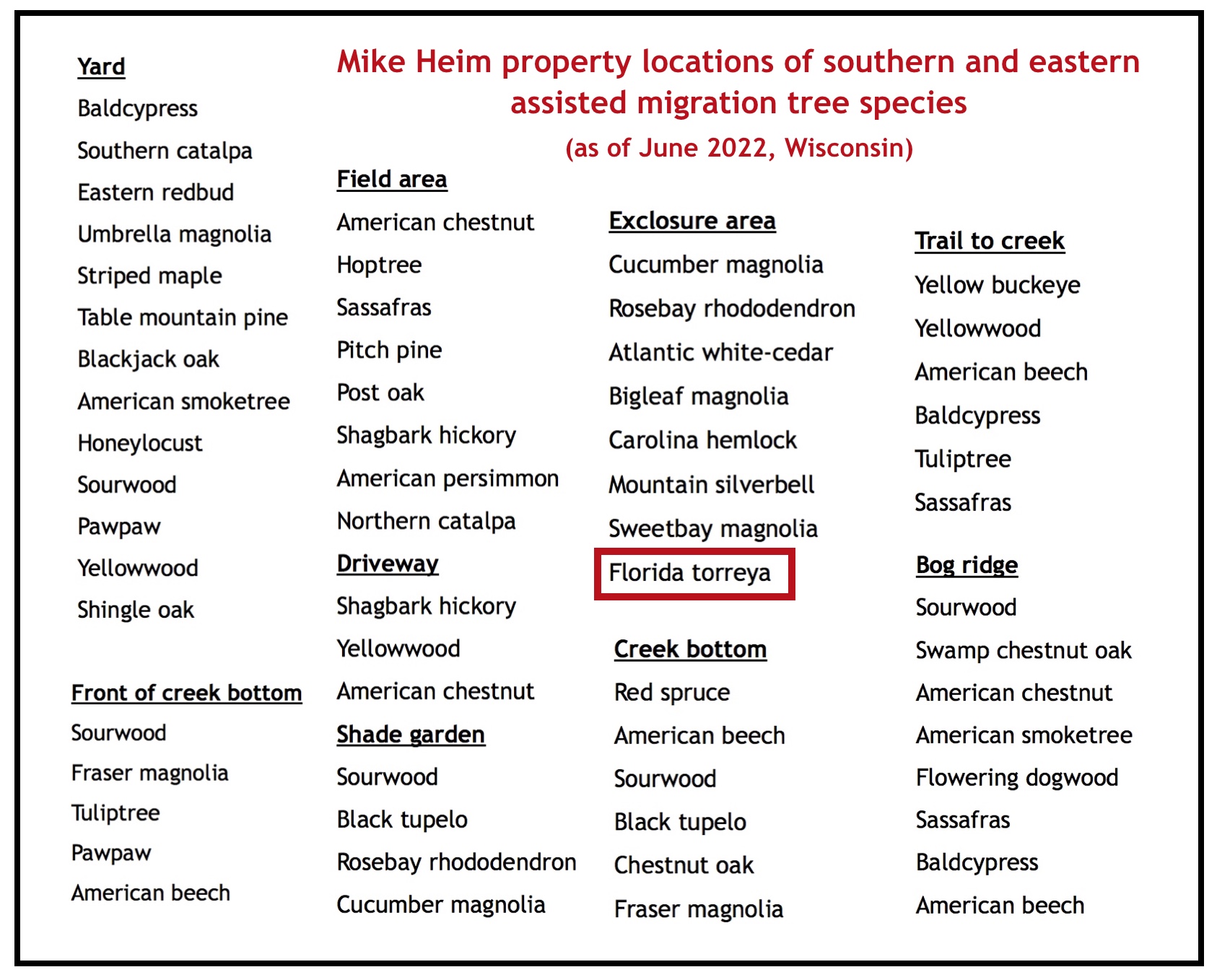
• December 2022/ Michael Heim / A Wollemia Christmas Tree in Wisconsin (potted, of course)
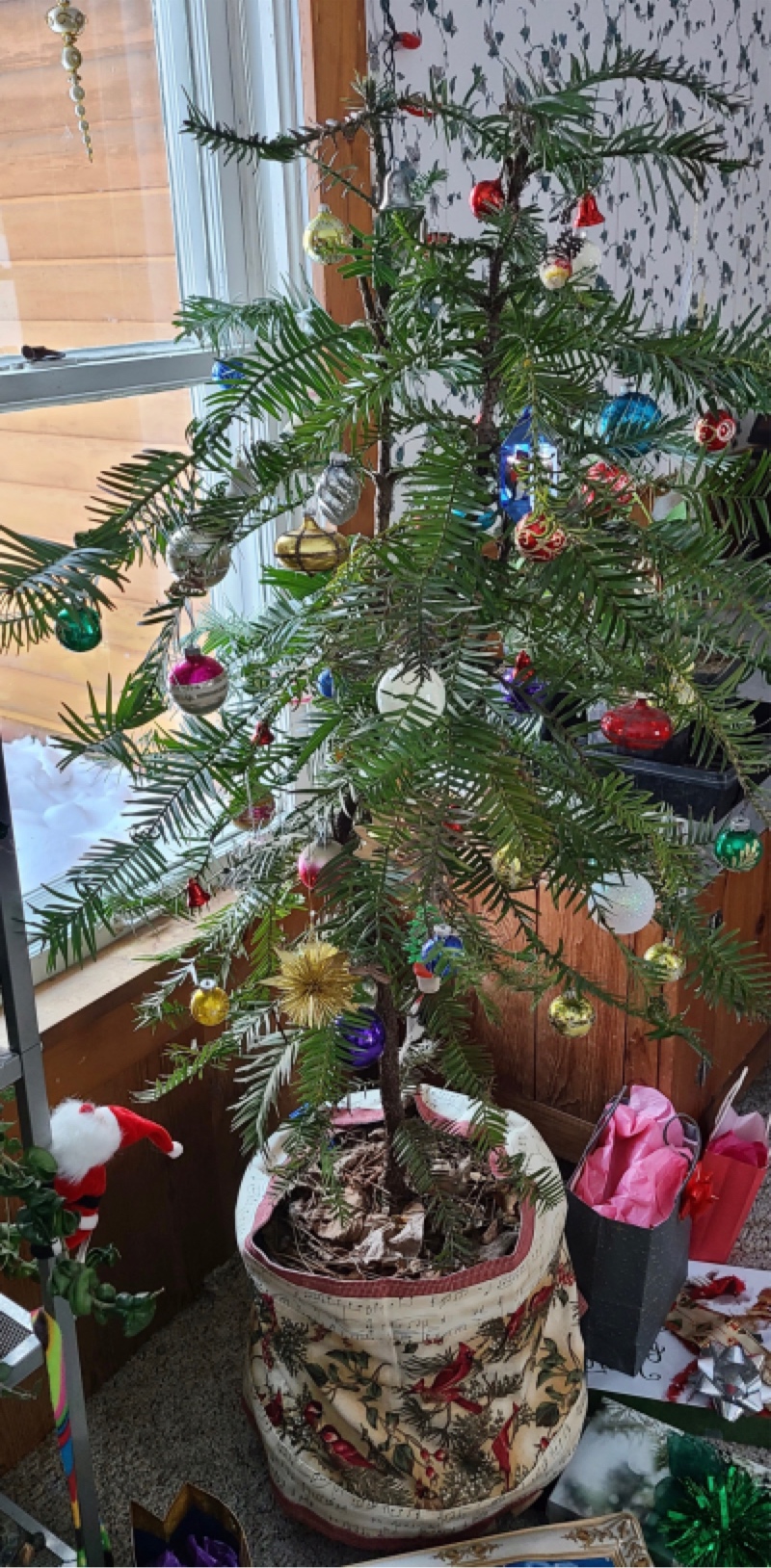 |
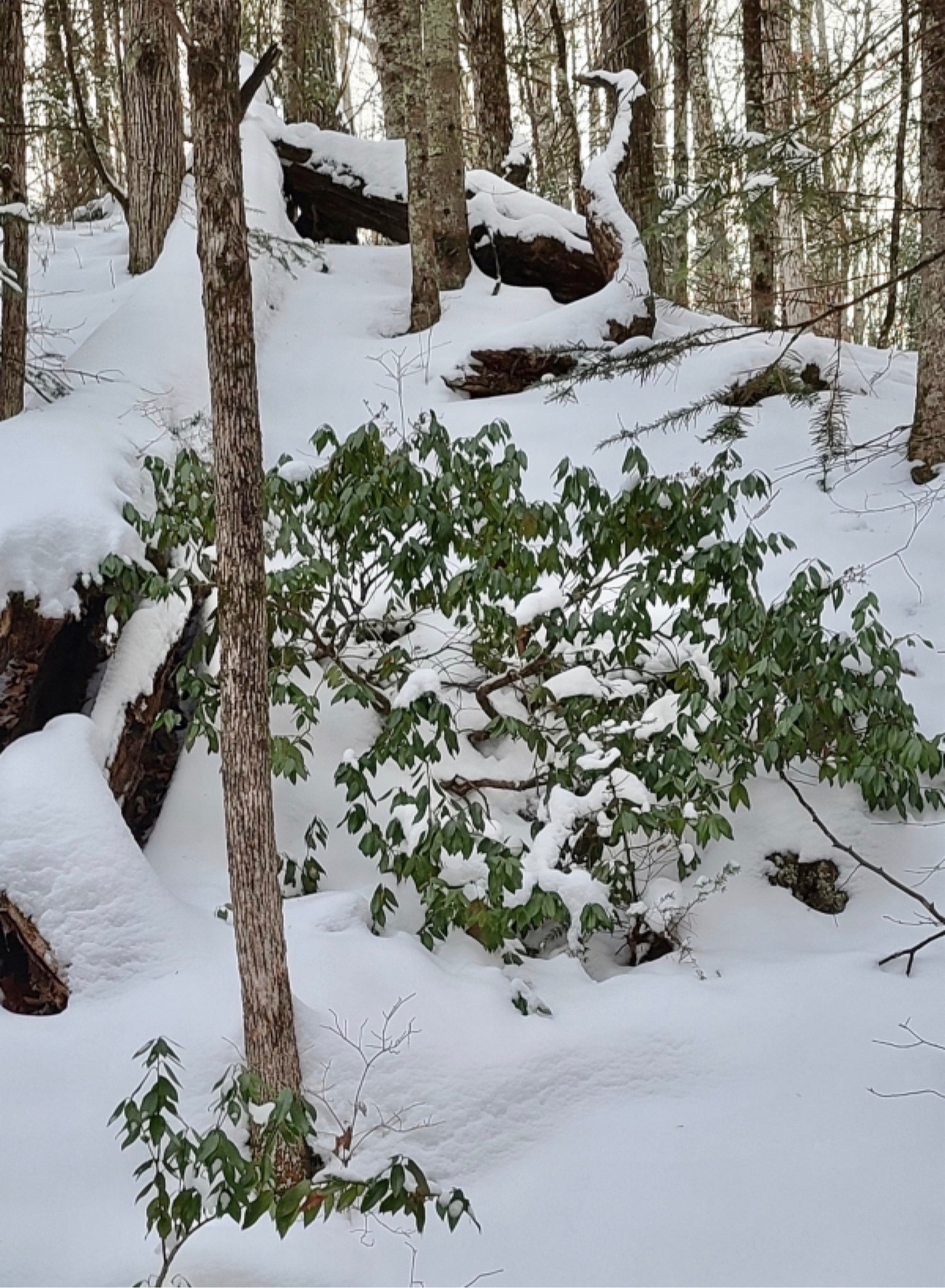 |
|
PHOTO LEFT: Our Wisconsin Torreya planter sent us this photo of the Christmas tree that he, as a self-described "plant nerd," is enjoying this season. It is none other than the famous "living fossil" plant of Australia, discovered alive in 1994. This is the monotypic genus Wollemia.
Like our own glacial relict, Torreya taxifolia, Wollemia is making a last stand in the coolest place it could find: the bottom of deep, nearly inaccessible canyon in southeastern Australia. Sadly, unlike Torreya, there is as yet no citizen or governmental project aiming to "rewild" this remarkable tree into a poleward location (are there any in the southern hemisphere?) where it could thrive over a larger geographic range. All Wollemia here in the USA in horticultural circulation are rooted branchlets. Mike sets this potted specimen outdoors in the warm seasons, bringing it back inside each winter.
PHOTO RIGHT: Earlier this month, Mike sent Torreya Guardians this photo of an ericad shrub native to the southern Appalachians that he had planted in his Wisconsin forest: Pieris floribunda.
|
• April 2023/ Michael Heim / "Botanical Beauties of the Alabama Appalachians"
Michael Heim wrote a photo-rich essay about his botanical trip, August 2022, into the southernmost Appalachians of Alabama. It was published in the Spring 2023 issue of Rock Garden Quarterly, a publication of the North American Rock Garden Society. (Click here for a PDF.) An excerpt that shows his Torreya assisted migration action (in Wisconsin) in its broader context):
"... I am a horticulturist and find myself irresistibly drawn to novel plants that could potentially be grown successfully in my part of the country, which happens to be northern Wisconsin. You're probably saying to yourself, "Yeah, right. Alabama plants an hour's drive south of Lake Superior. Give me a break." Well, yes. Remember, I did my research. In our front yard stands an impressive southern catalpa (Catalpa bignonioides) which I grew from seed in 1981. The native range of this tree extends from west-central Georgia to central Alabama, yet it thrives here in the far north, having taken -43F (-41C) without injury. There are numerous examples of other southern plants tolerating cold well beyond expectation. Two possible explanations for this come to mind. One is that, during ice ages, such cold temperatures were not uncommon that far south. Even in recent times, temperatures in this portion of Alabama have plunged to -27F (-33C), though this is still a far cry from -43F. The other possibility is that the current population has been unable, for whatever reason, be it unsuitable soils or extinct dispersers, to reclaim its preglacial range to the north. Whichever it may be, this does present some exciting horticultural possibilities...."
• July 2023/ Michael Heim / Healthy pure American Chestnuts planted here in 1980 Wisconsin
MIKE HEIM wrote: "Here are photos of my largest blight-resistent pure American chestnut. I had bought them from a nursery in MI. It developed blight cankers early on, healed over them, and hasn't had a problem since."
CONNIE BARLOW NOTES RELEVANCE RE HISTORIC GROVES (29 August 2023): The timing of these photos is very helpful, as I have just finished reading "Beyond blight: Phytophthora root rot under climate change limits populations of reintroduced American chestnut", by Eric J. Gustafson, Brian R. Miranda, Tyler J. Dreaden,
Cornelia C. Pinchot, and Douglass F. Jacobs, in 2022, Ecosphere.
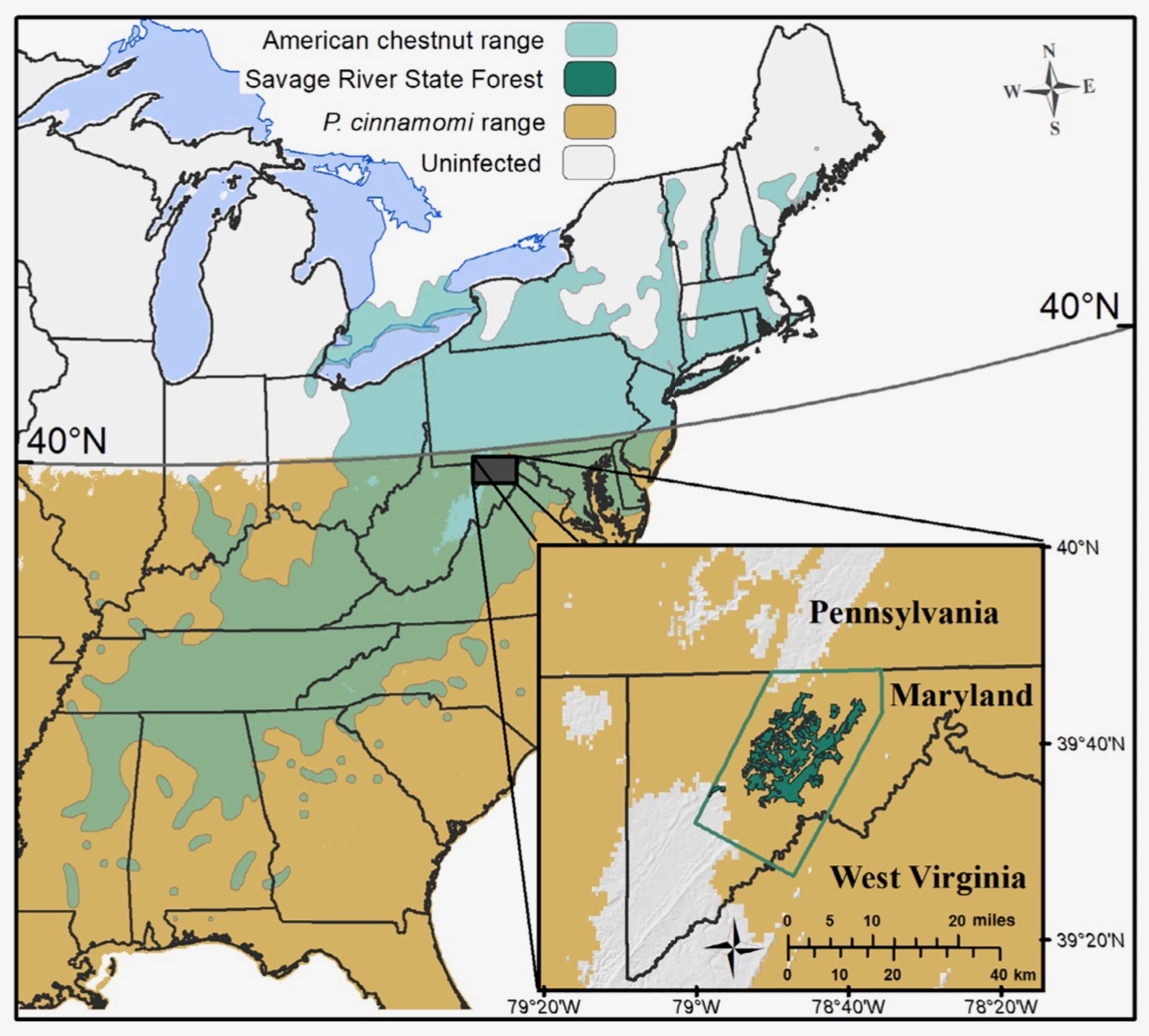 |
|
LEFT: The 2022 paper includes this MAP of (a) American Chestnut historic range and (b) current survivable range of Phytophthora Root Rot. Mike Heim's 43-year-old chestnut trees (pure American Chestnut) are in northern Wisconsin, hence far north of current and likely near-future survivability of the root rot disease.
Because Historic Groves documentation by Torreya Guardians far north of the tiny historical range of Torreya taxifolia in n. Florida has been recognized by the U.S. Fish and Wildlife Service as an important contribution of ours in learning recovery parameters for this critically endangered species, I am keen to point out to the USDA researchers who coauthored this 2022 paper that, in addition to computing prospective disease-free latitudes, they should make an effort to document and publish mature plantings of American Chestnuts that are thriving in far-north latitudes, including Mike Heim's site in northern Wisconsin.
|
• March 2024/ Michael Heim / Photos of southerly plant species that survived the winter
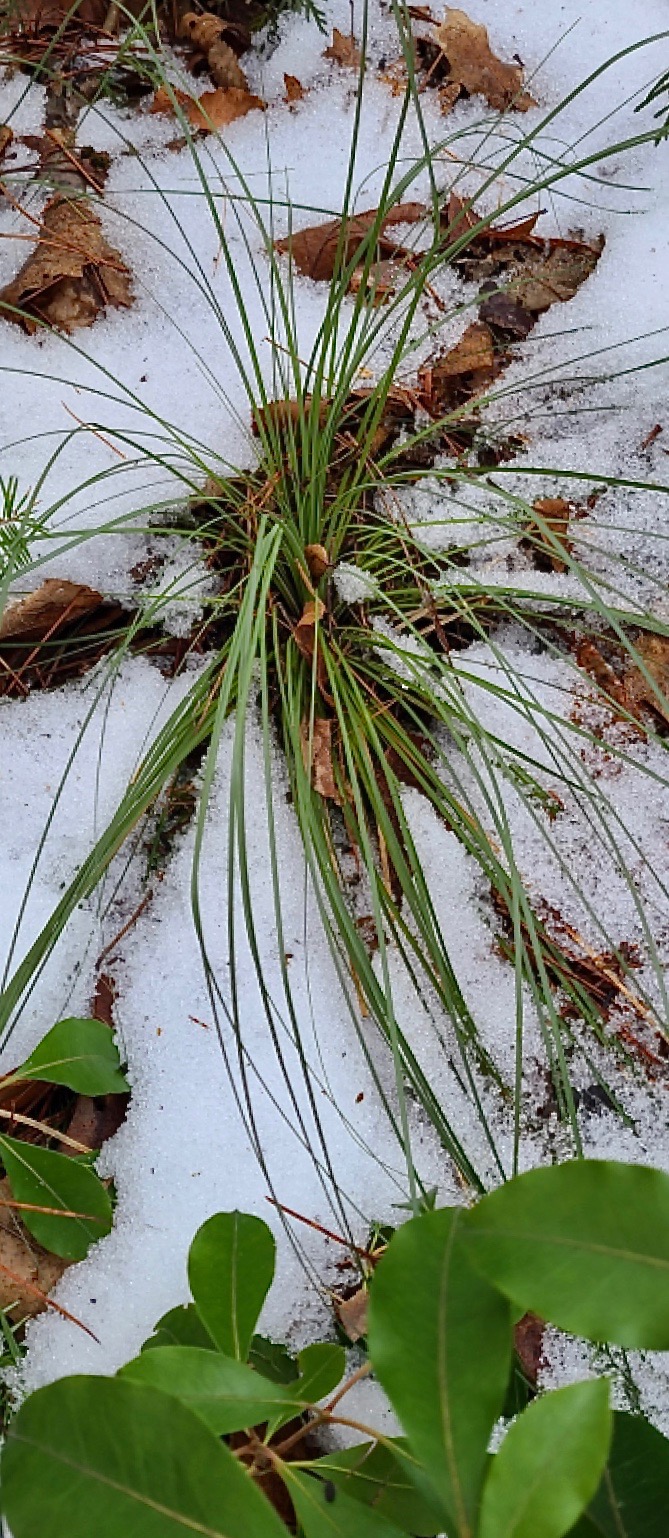
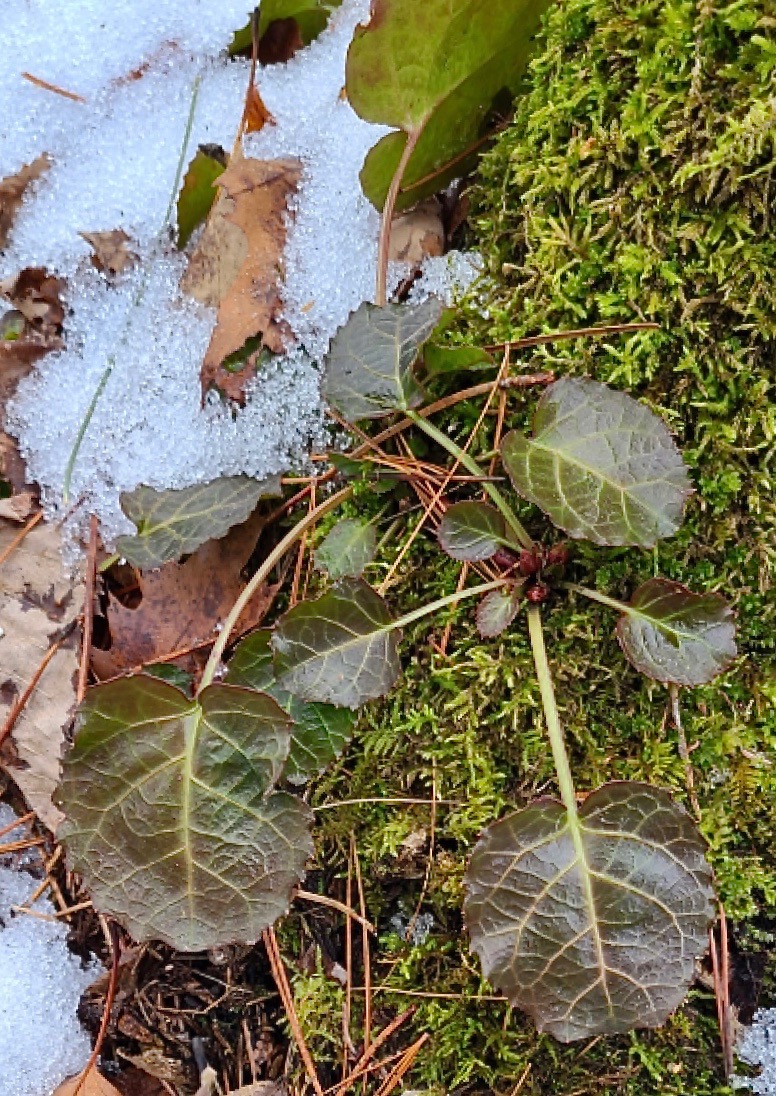
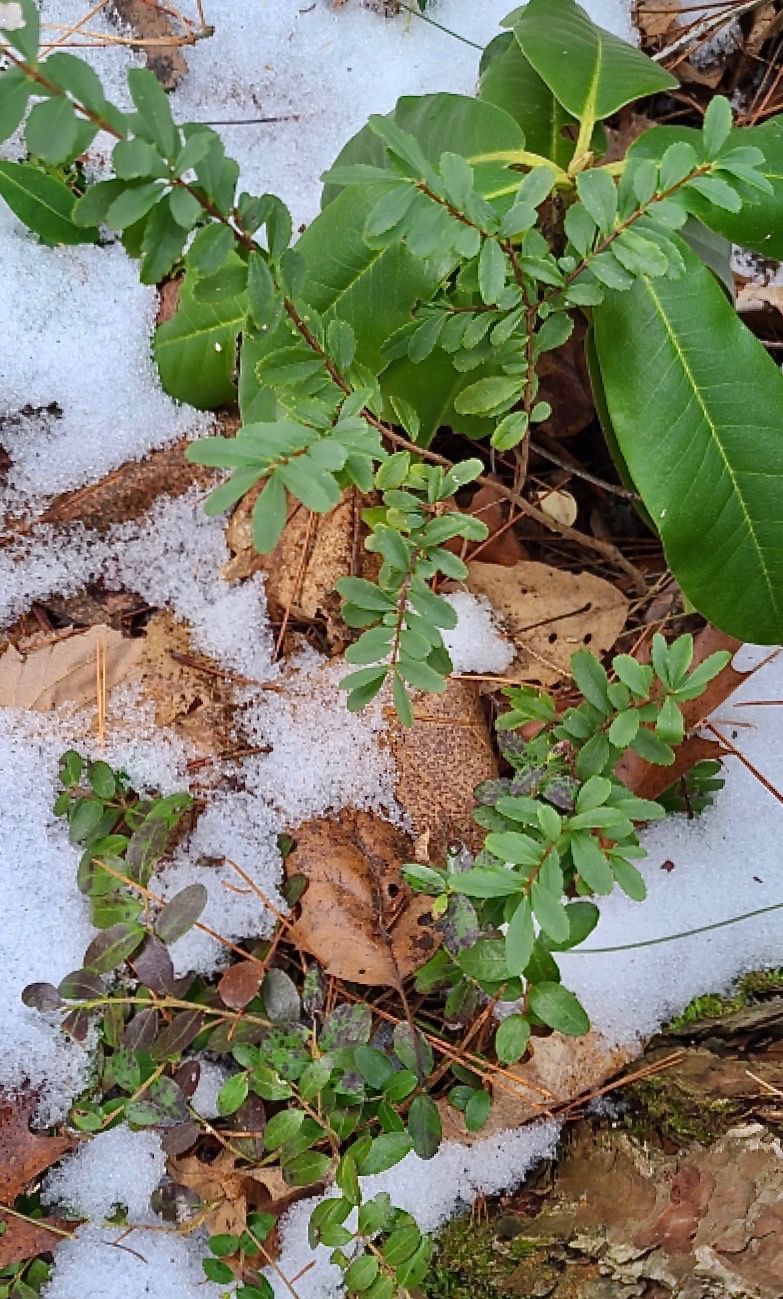

ABOVE L TO R: Xerophyllum asphodeloides; Shortia galacifolia; Pachistima myrsinites with Gaylussacia brachycera; Magnolia macrophylla.
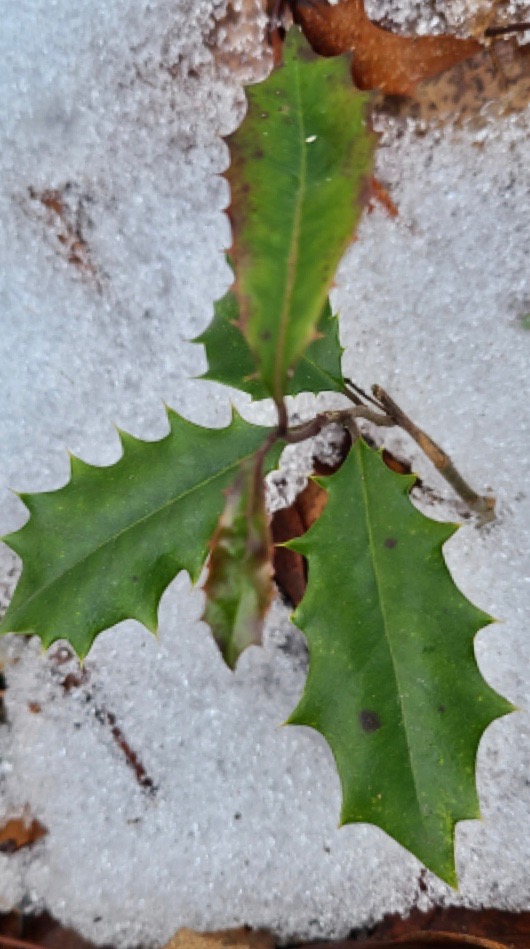
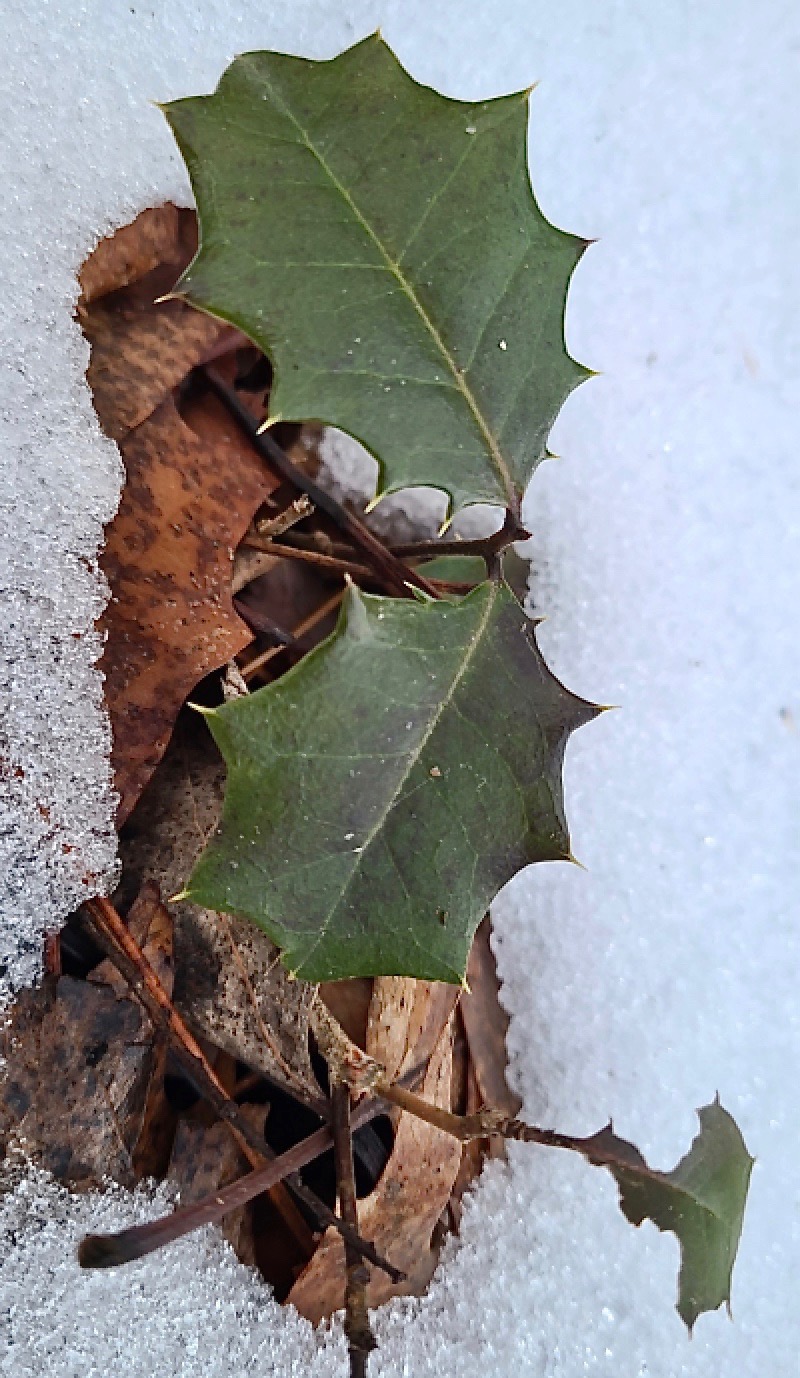
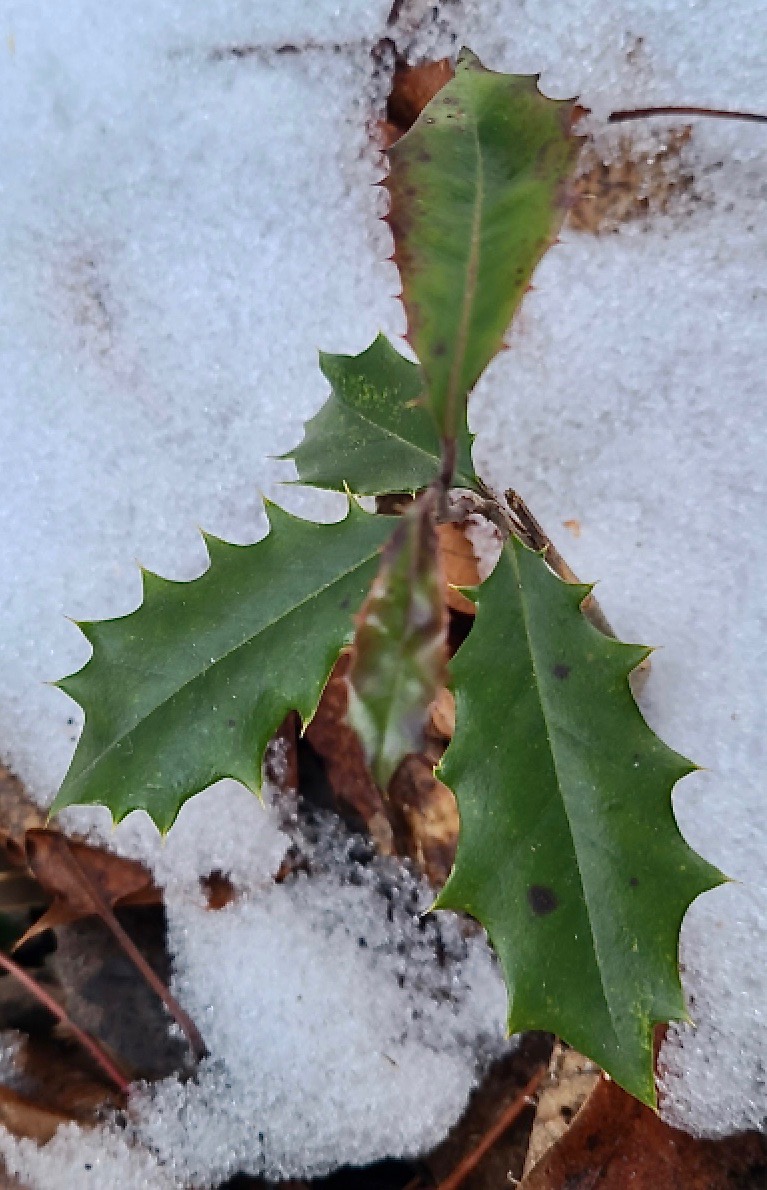
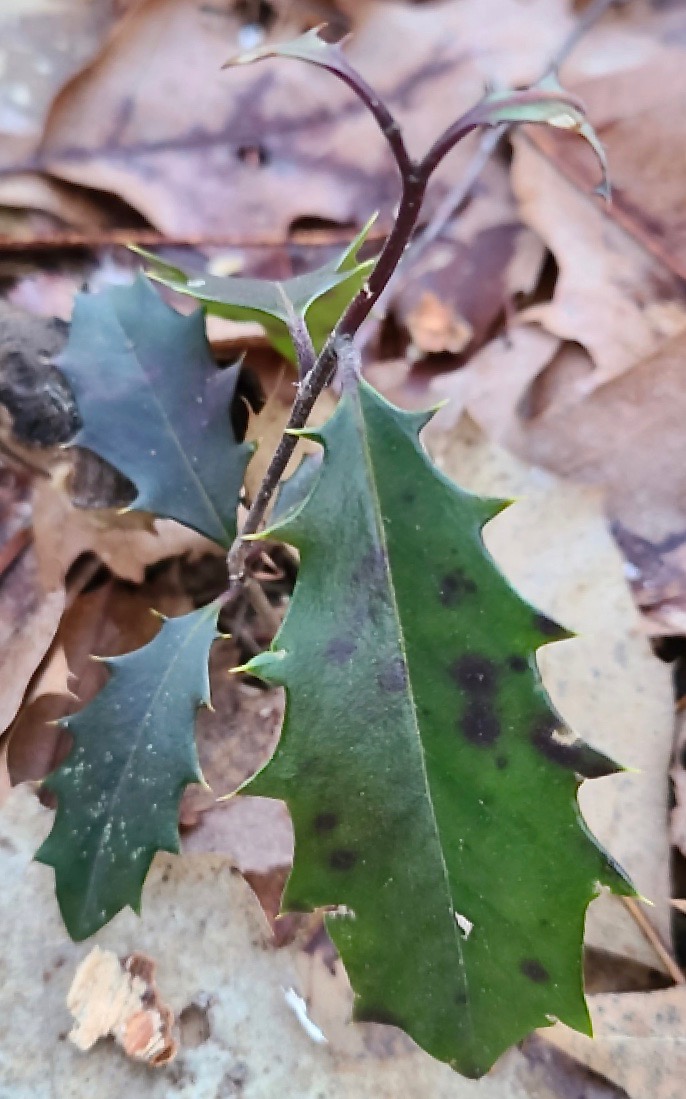
ABOVE & BELOW: Here are most of the surviving hollies I am testing. Each is a different seedling or rooted cutting which I gathered in the wild, after researching the coldest locations in the species' range: the northwestern edge of the Cumberland Plateau in KY, the coldest part of NC (-32F recorded there), and central WV.
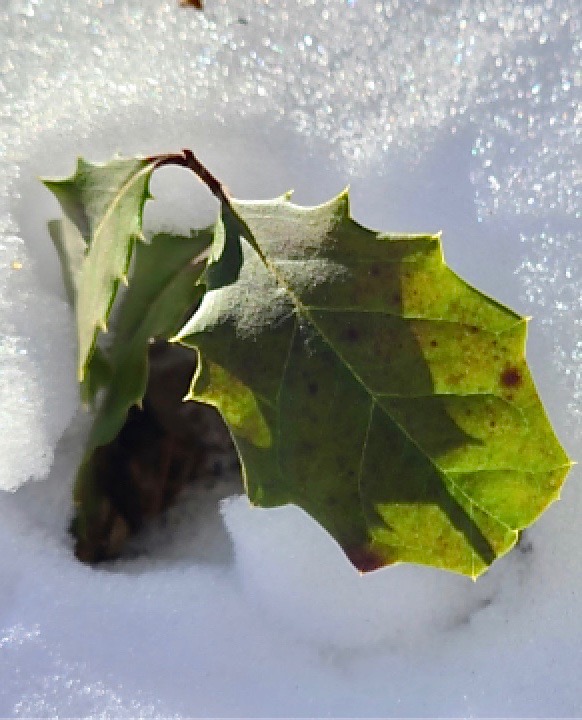
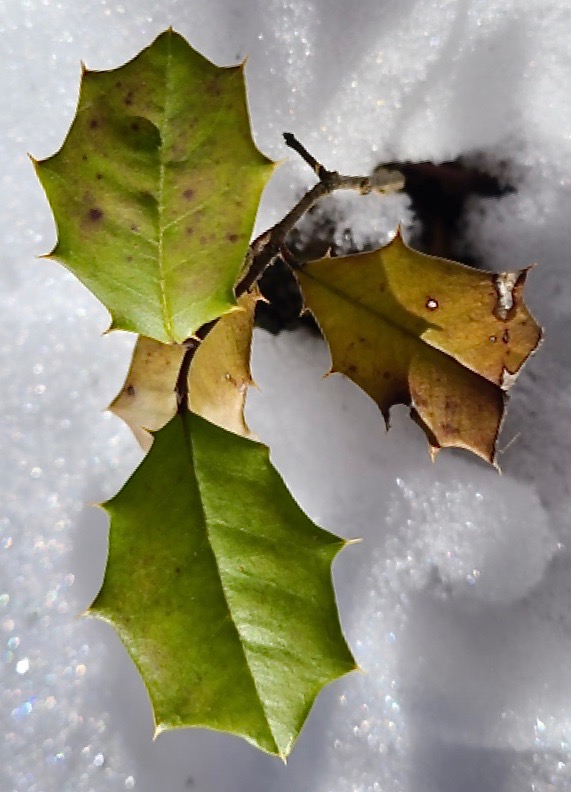
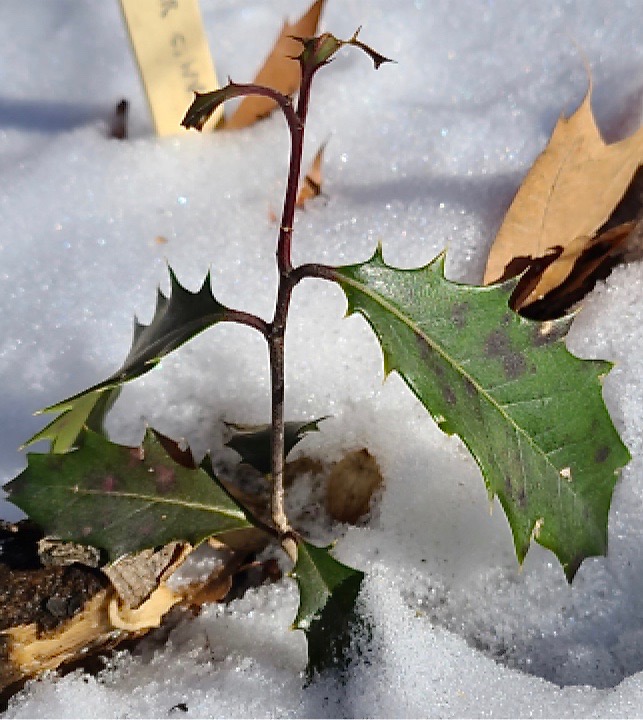
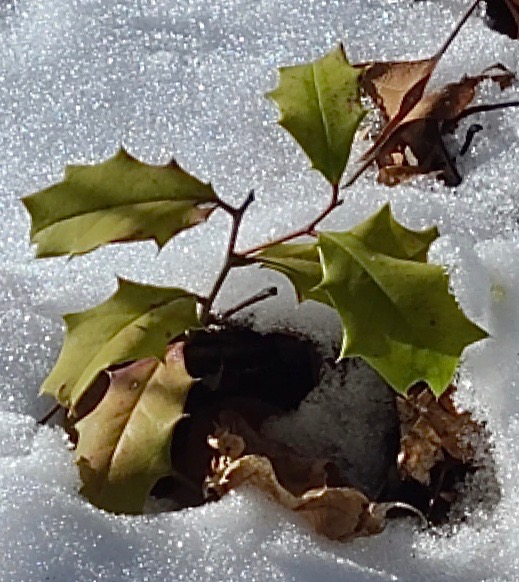
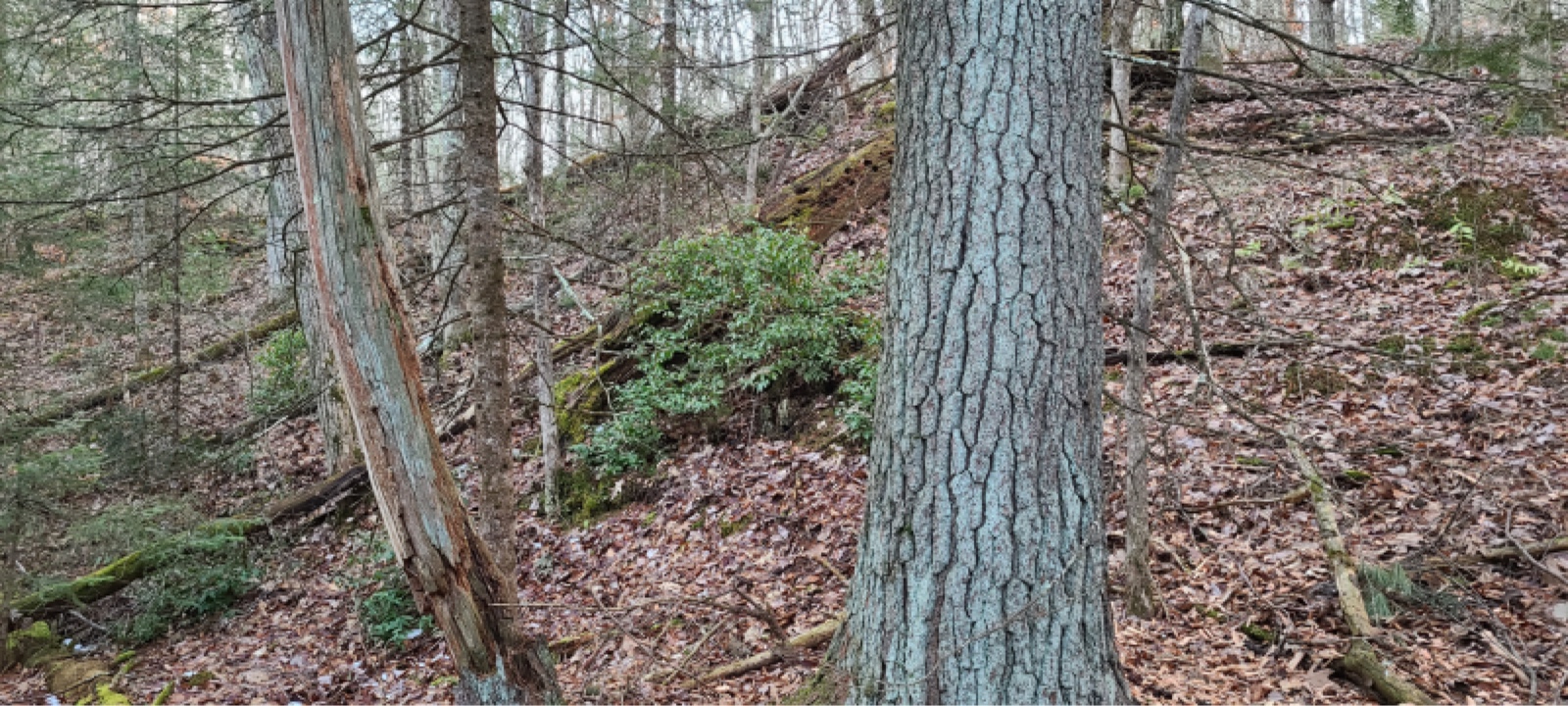
ABOVE: Pieris floribunda.
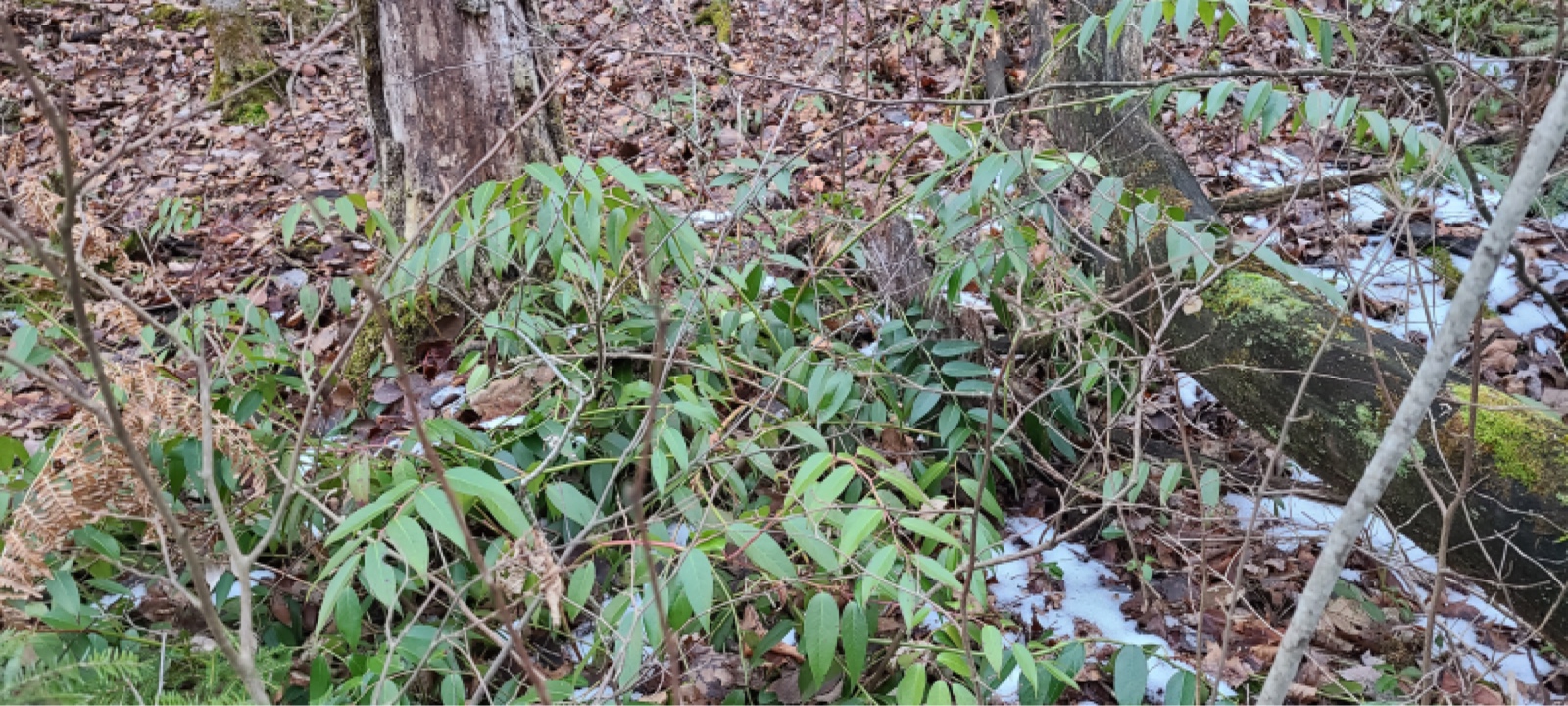
ABOVE: Leucothoe fontanesiana.
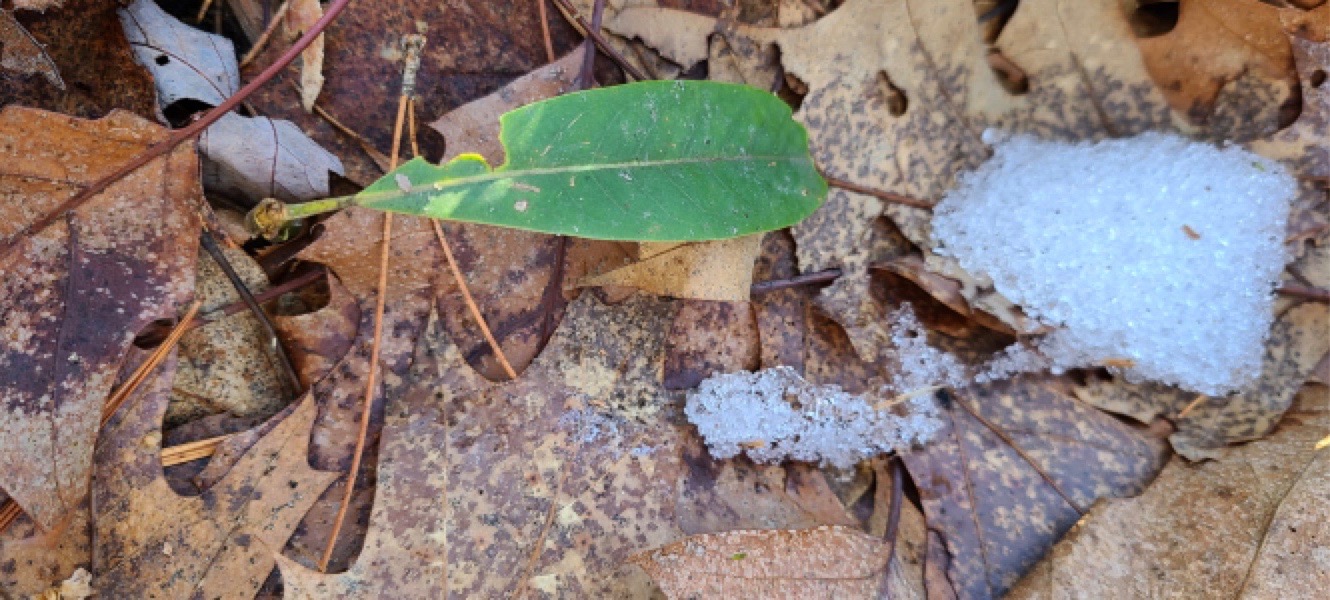
ABOVE Persea borbonia. UPDATE 2025: The Persea died.
• June 2024/ Michael Heim / FLAME AZALEA thriving in Wisconsin
 |
|
This photo was taken June 12 and attached in an email from Mike Heim that same day. He wrote:
Flame azalea, Rhododenron calendulaceum, naturalized in my woods as part of an assisted migration study.
There are many other individuals nearby, which makes the tiger swallowtails very happy.
Hoping for seedlings, which would indicate an established population."
NOTE: Wikipedia describes the distribution:
This species of Rhododendron is native to the Appalachian Mountains in the eastern United States, ranging from southern Pennsylvania and Ohio to northern Georgia. It may be extirpated from Pennsylvania and Alabama. The state of Pennsylvania lists Mi as extirpated from the state.
|
• June 2025/ Michael Heim / New experiment with Glyptostrobus (native to Asia)
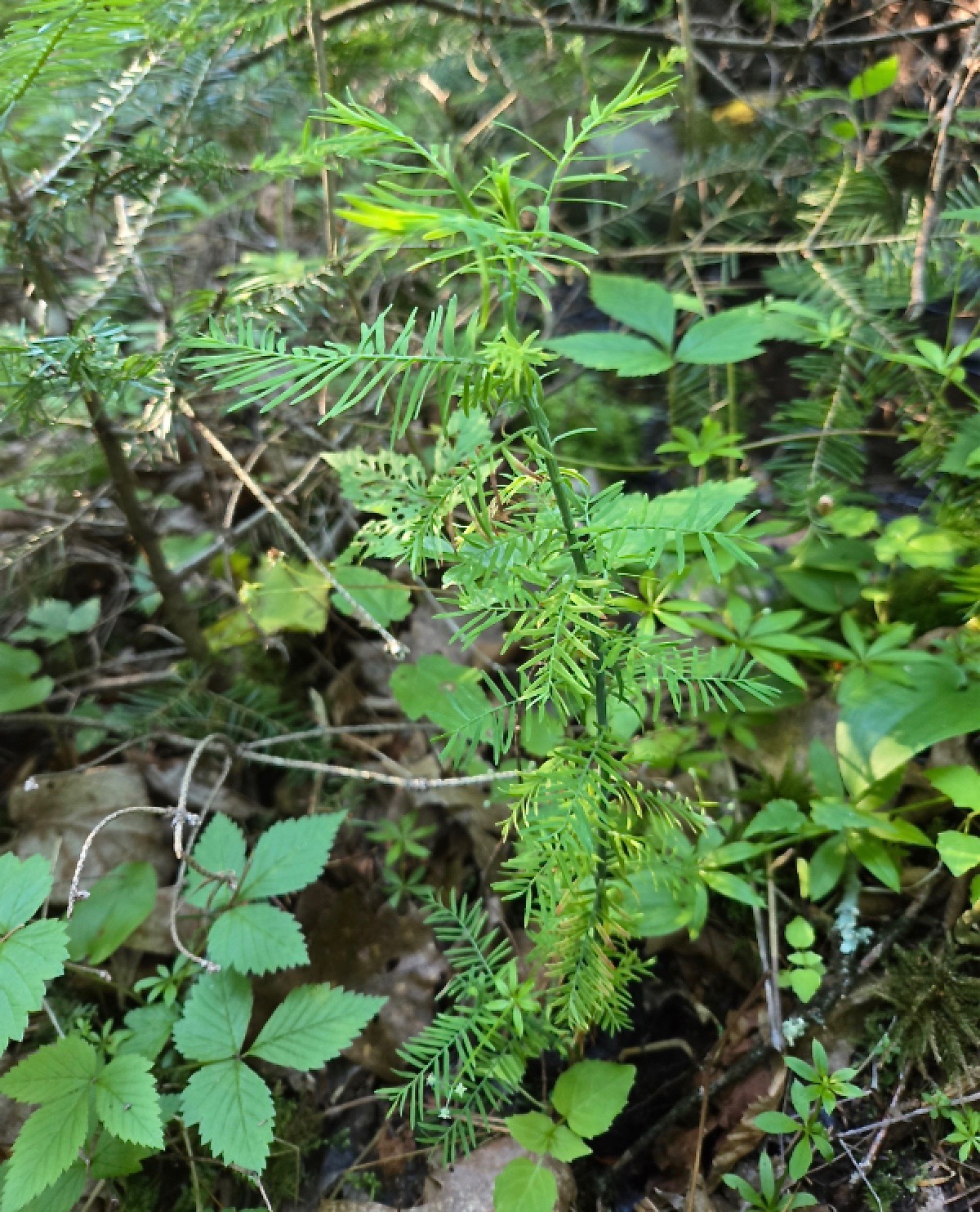
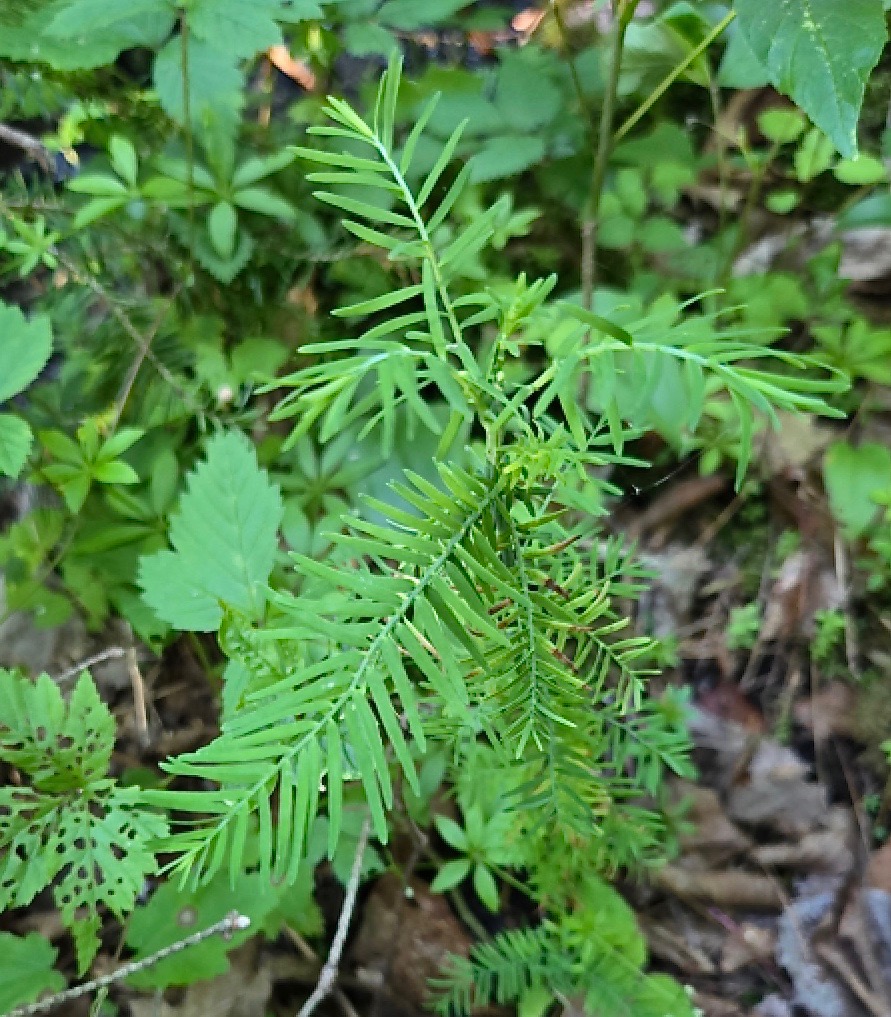
Two views of a single GLYPTOSTROBUS seedling, newly planted out this year on the wet bank of a creek. Mike writes, "Here's hoping for another surprising Tertiary rewilding success!"
WIKIPEDIA says: Glyptostrobus is a small genus of conifers in the family Cupressaceae (formerly in the family Taxodiaceae). The sole living species, Glyptostrobus pensilis, is native to subtropical southeastern China, from Fujian west to southeast Yunnan, and also very locally in northern Vietnam and Bolikhamsai province of eastern Laos near the Vietnam border. The genus formerly had a much wider range, covering most of the Northern Hemisphere, including the high Arctic in the Paleocene and Eocene. The oldest known fossils are late Cretaceous in age, found in North America. It contributed greatly to the coal swamps of the Cenozoic era. It was reduced to its current range before and during the Pleistocene ice ages.
• June 2025/ Michael Heim / Metasequoia (Dawn Redwood) new growth
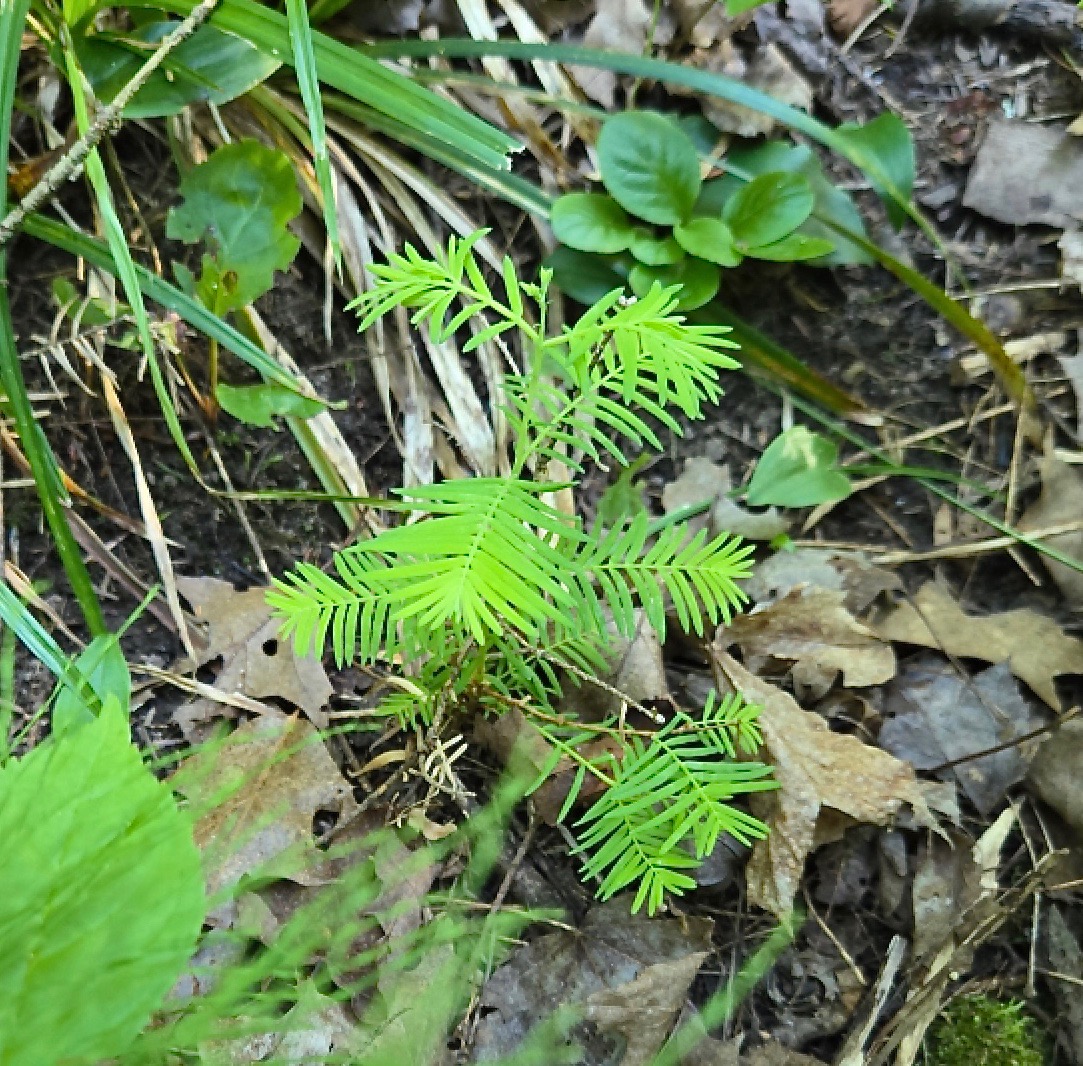
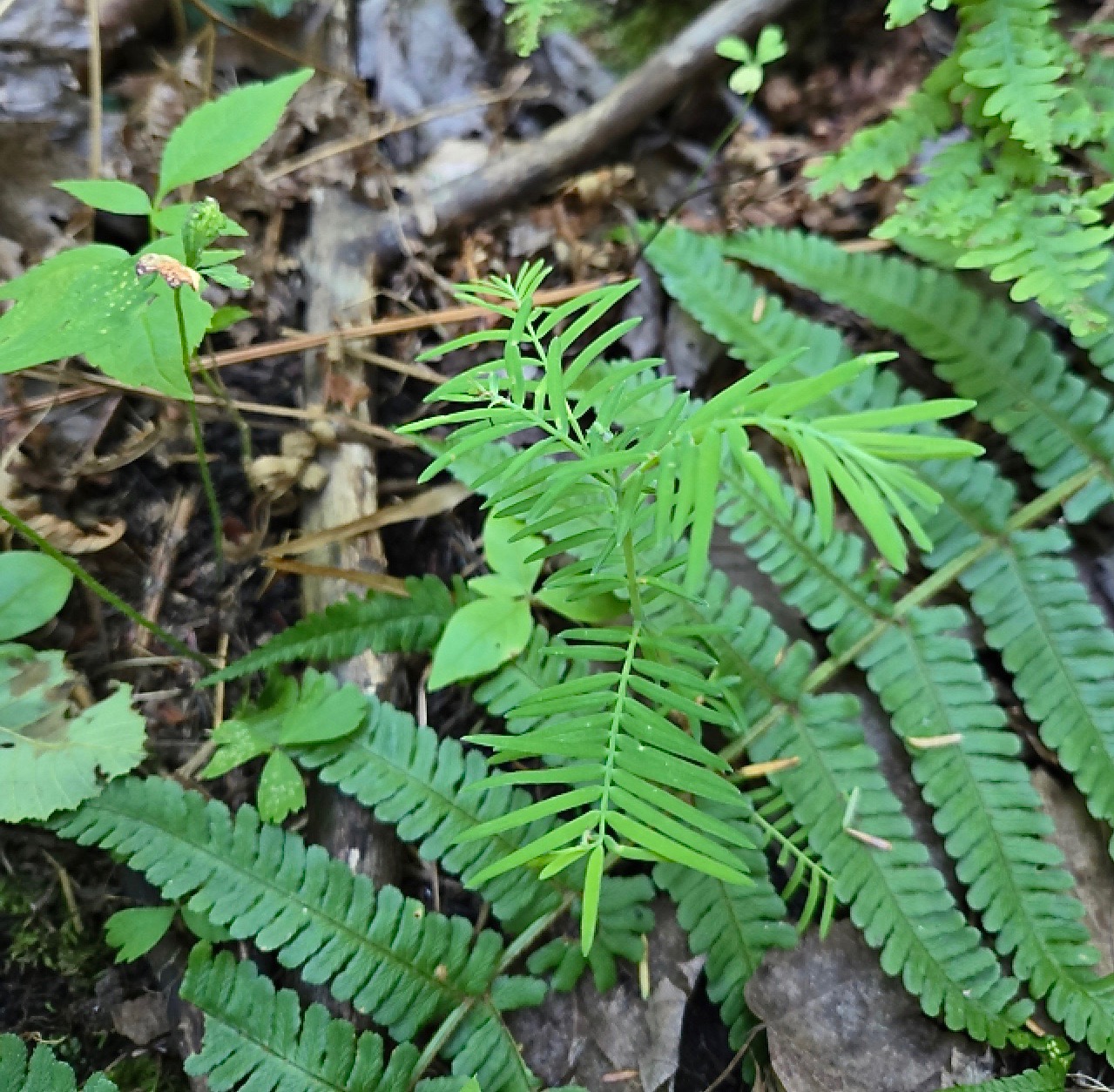
MIKE HEIM writes: "The old Metasequoia is still with us, but slow to leaf out this spring. Photos (above) captured June 24 show excellent new growth, having been planted as newly-germinated seedlings in my woods during the summer of 2024. I hope that this interesting species naturalizes here, returning to North America after a long absence."
• September 2025/ Michael Heim / Superb summer growth of Dawn Redwood
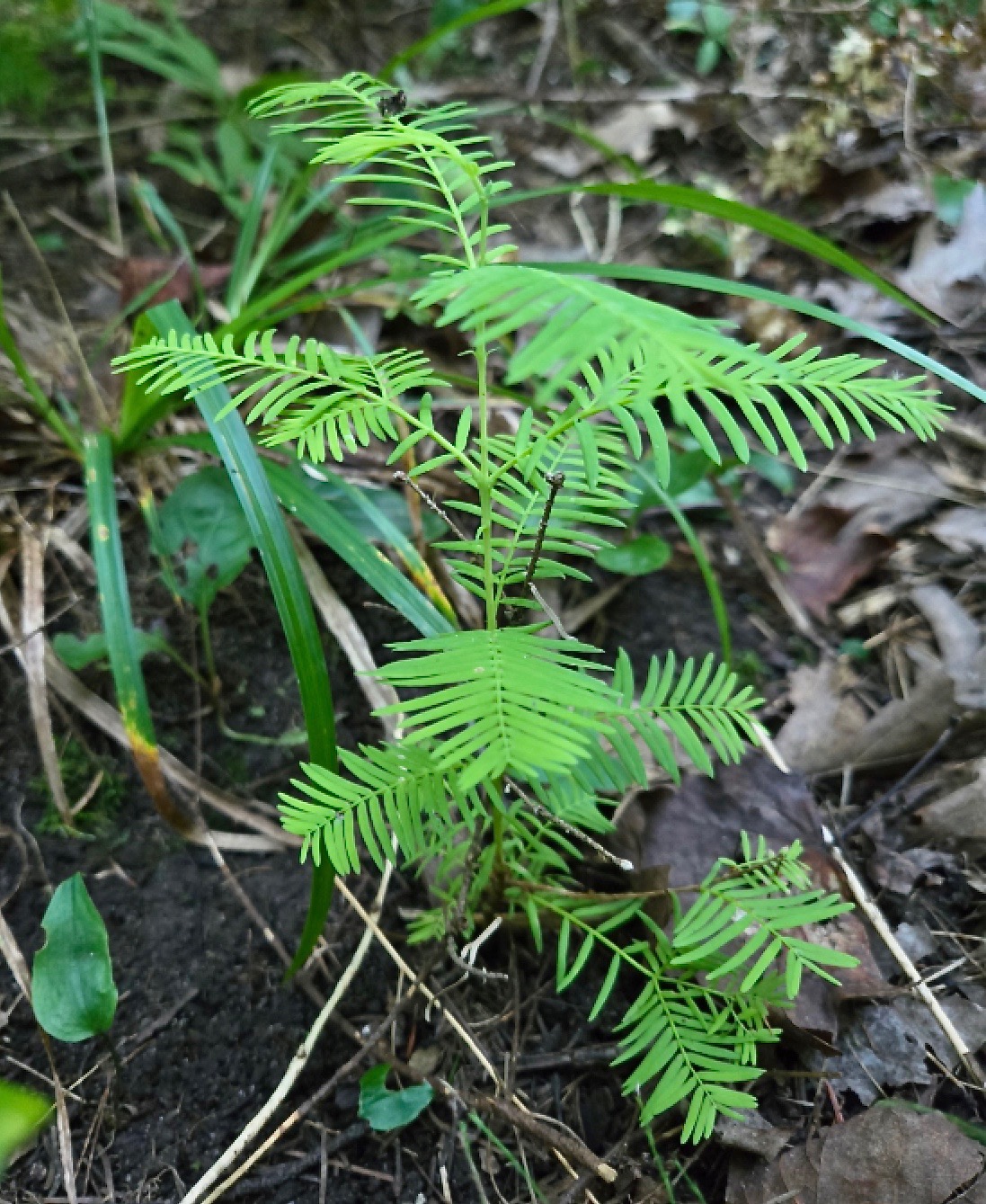 |
|
This photo was taken August 31.
Mike Heim reported in September 2025 that
"Last year's seedlings have grown 6x larger in the creek bottom."
|
• November 2025/ Michael Heim / Status of northward "assisted migration" of various plants
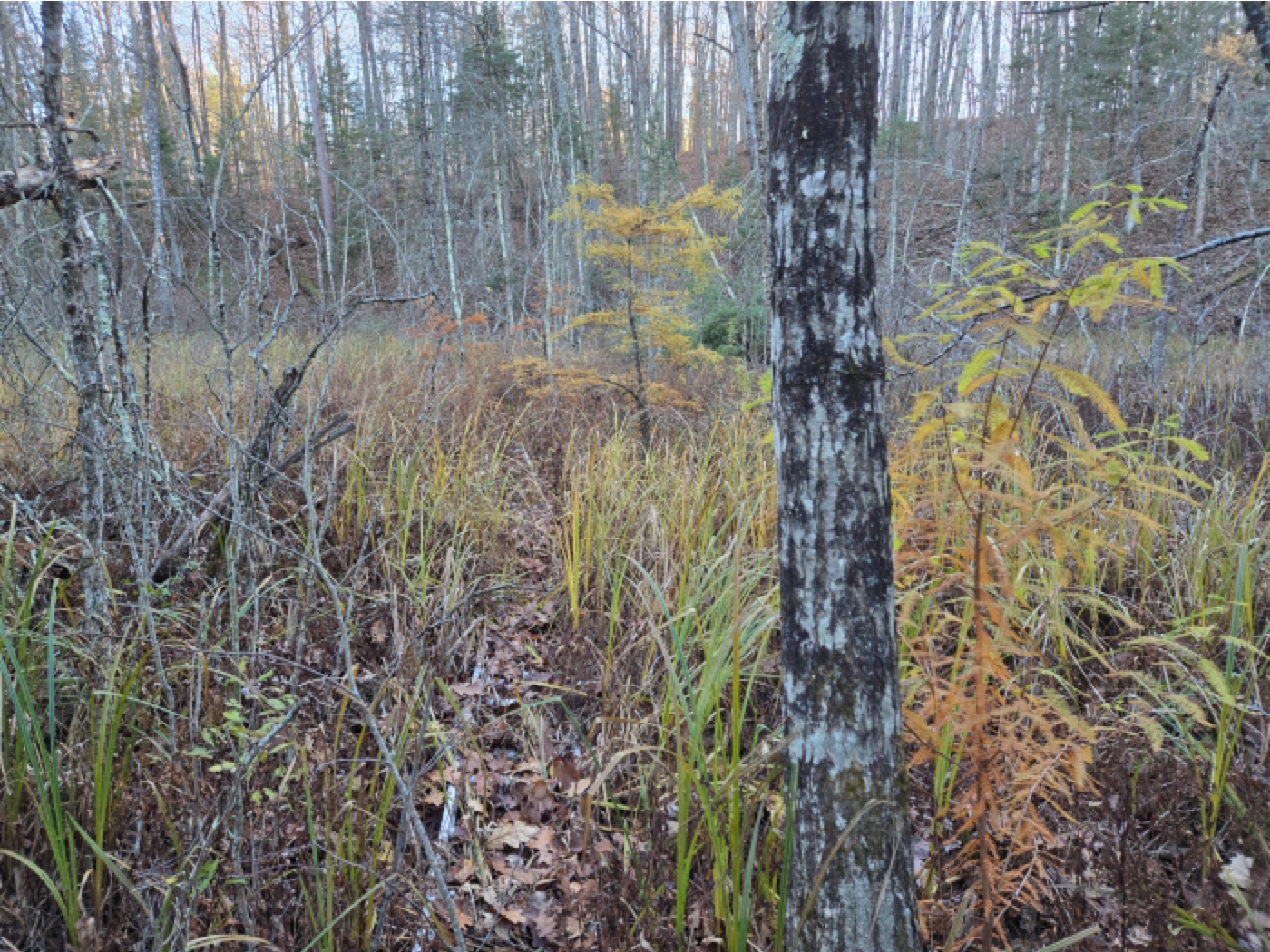
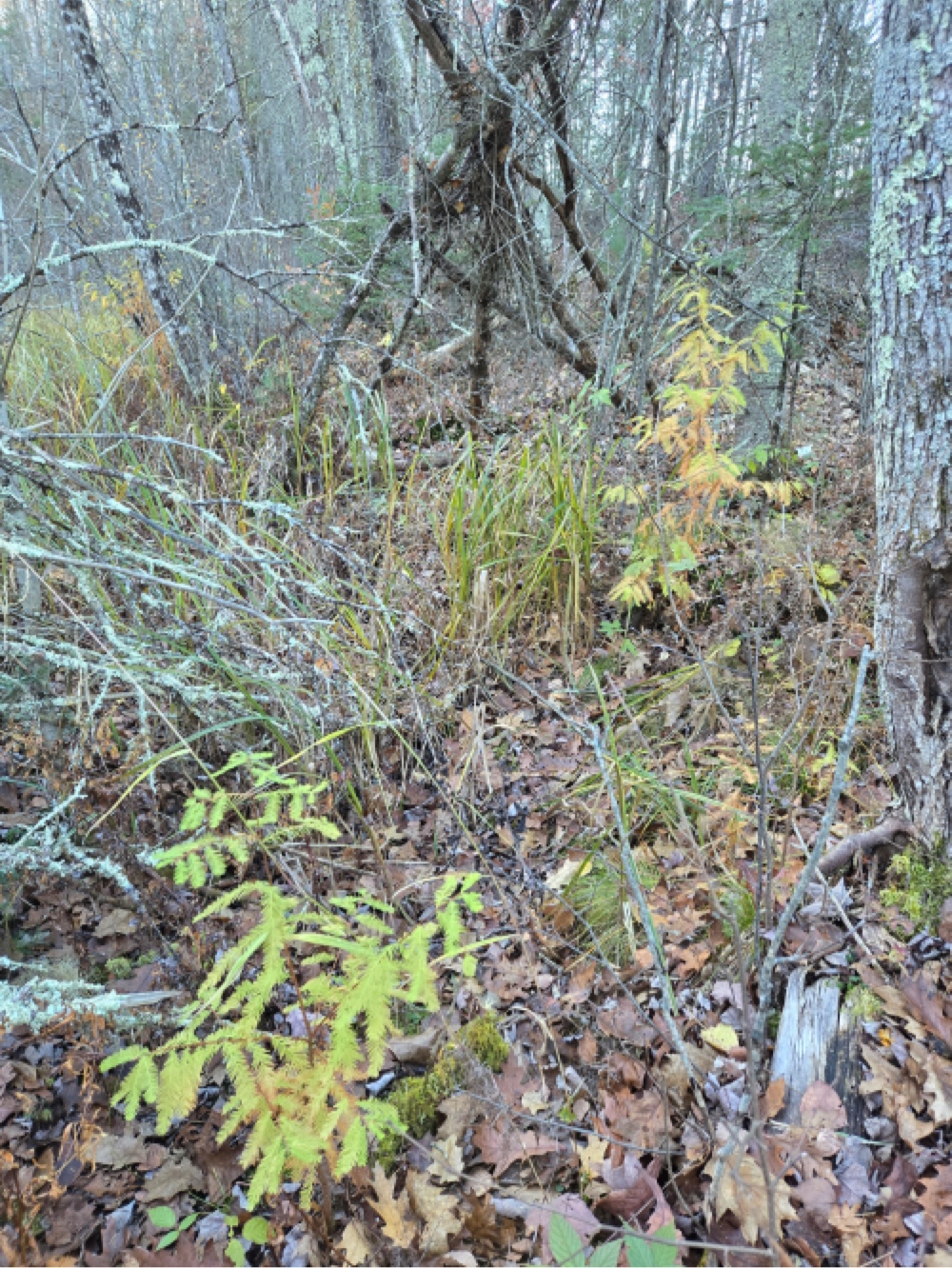
ABOVE: Baldcypress (Taxodium distichum) that I started from seed, now growing in and along the margin of a sphagnum bog.
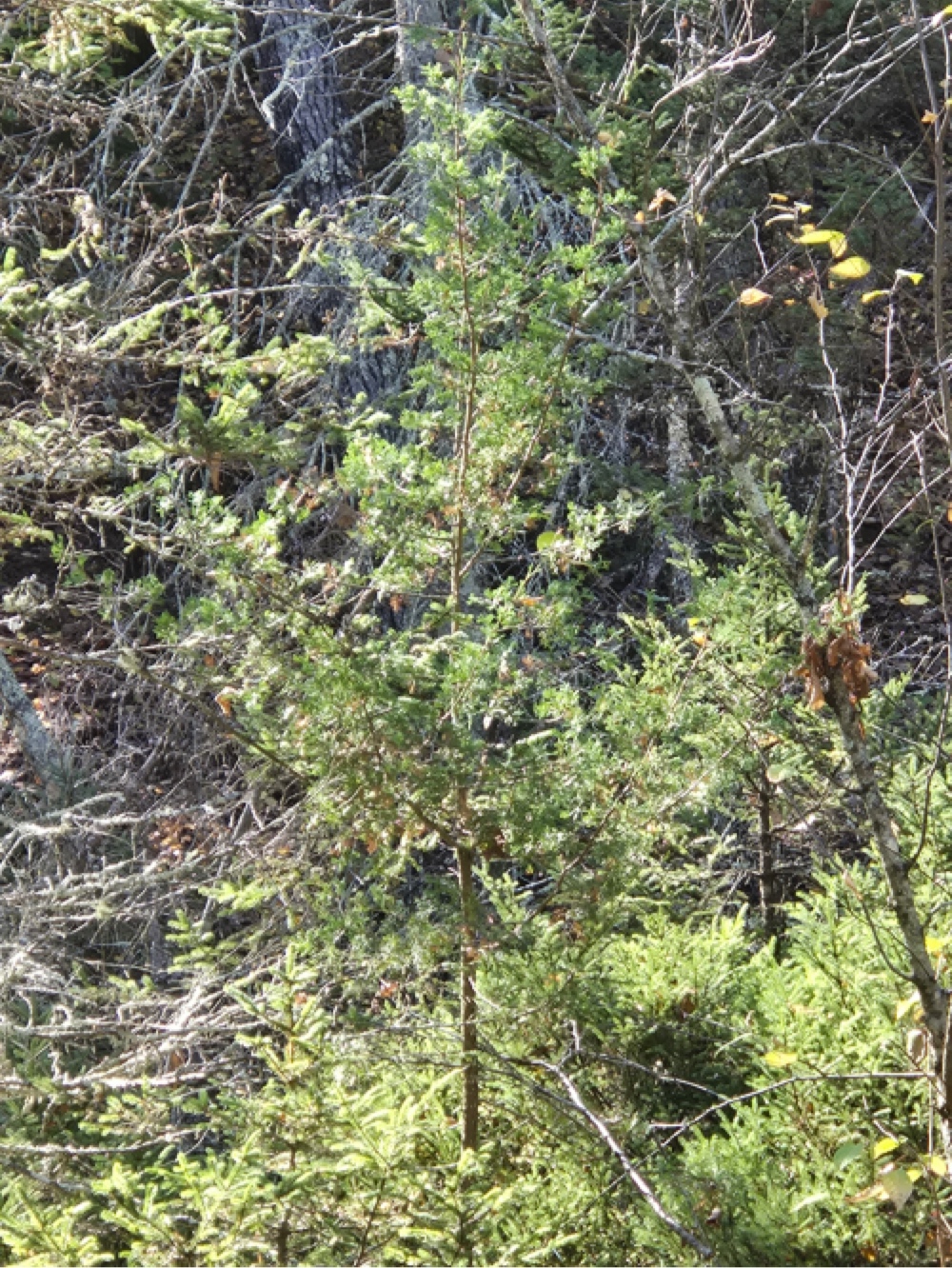
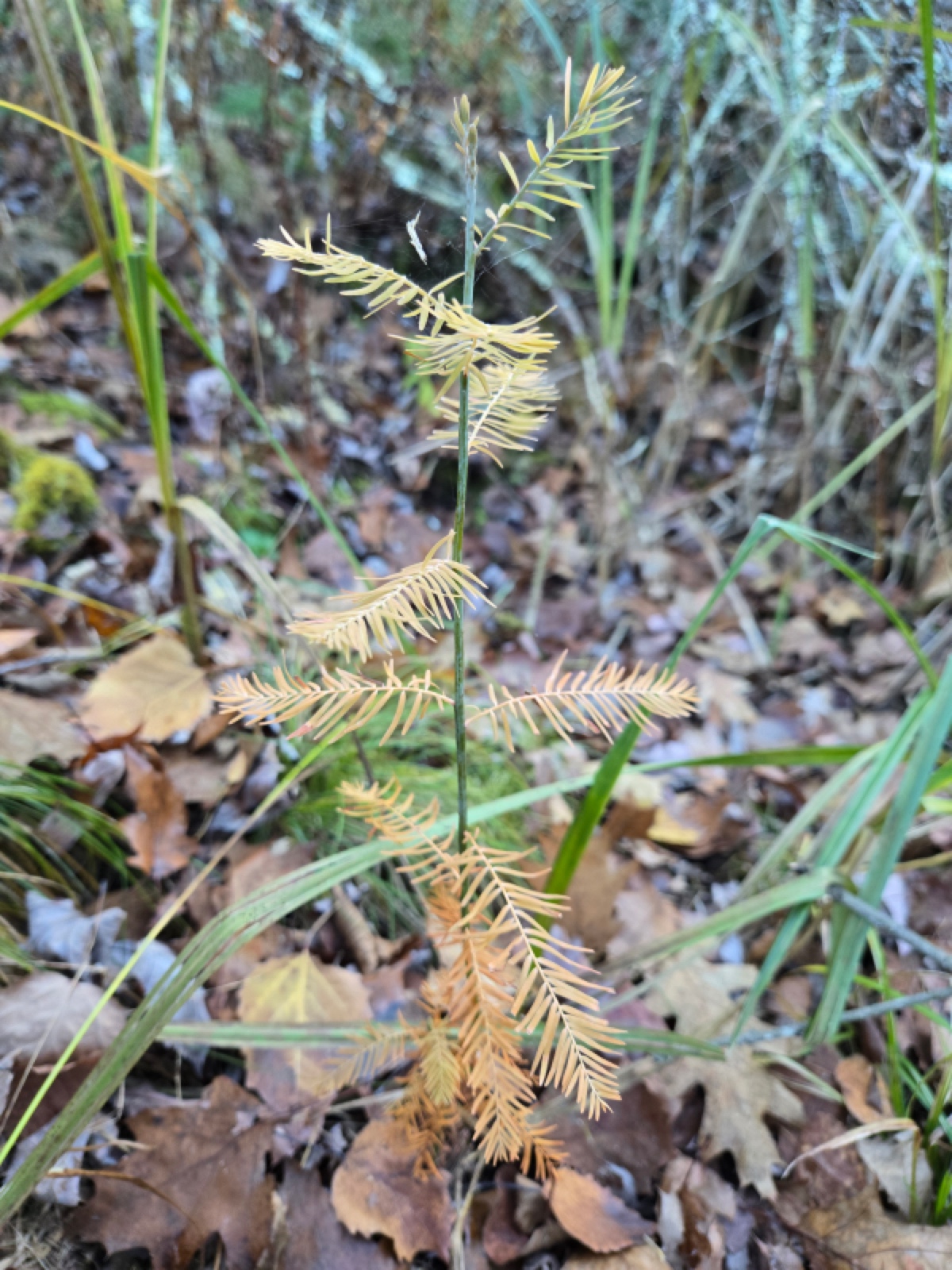
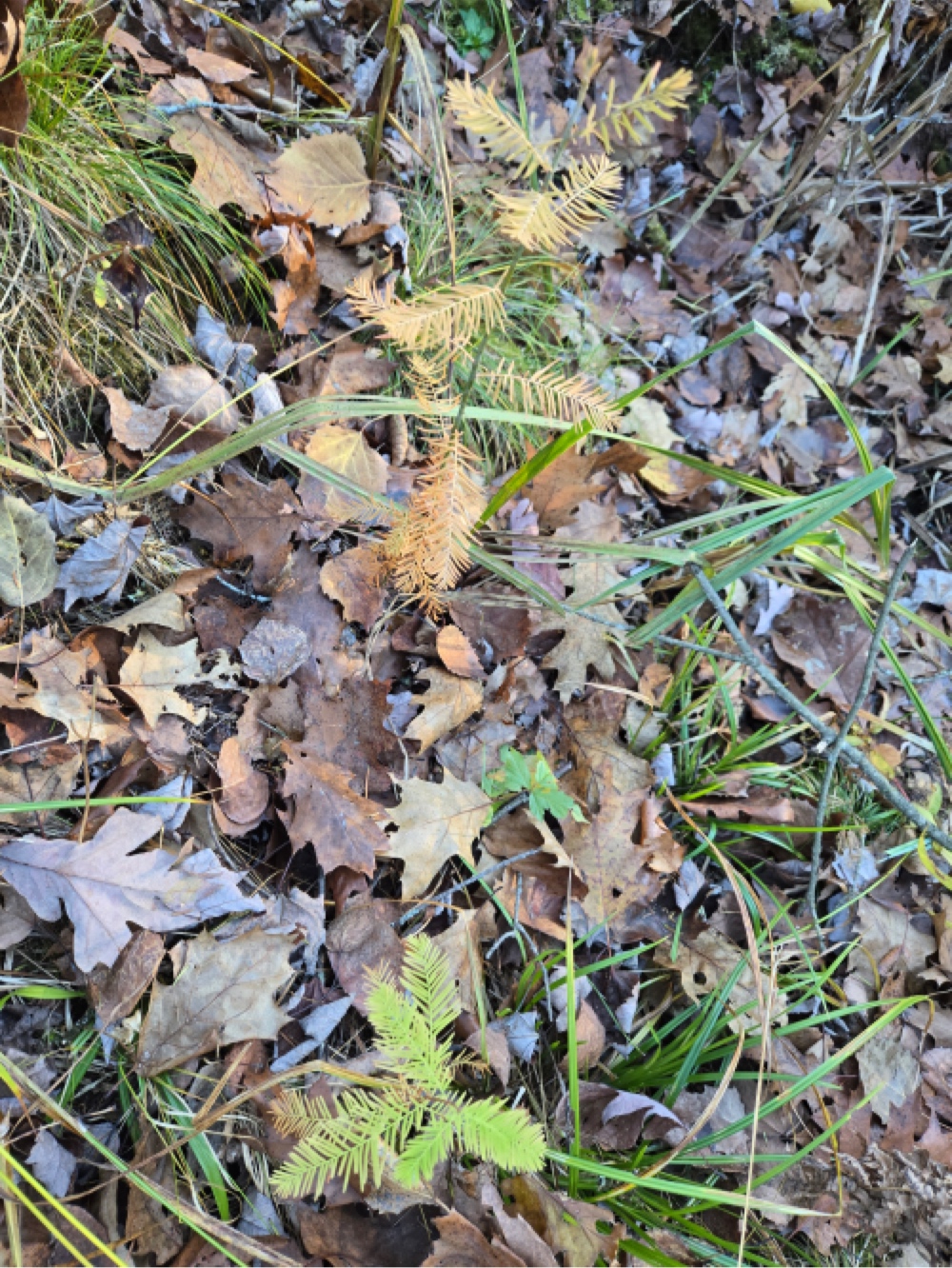
Left: Cupressus thyoides (Atlantic white-cedar in sphagnum bog).
Center: Glyptostrobus pensilis (a relict Tertiary species extant only in Asia today) along the margin of a sphagnum bog. Glyptostrobus grew in Alaska into the early Pleistocene.
Right: Glyptostrobus seedling (upper) compared to a Taxodium seedling (lower).
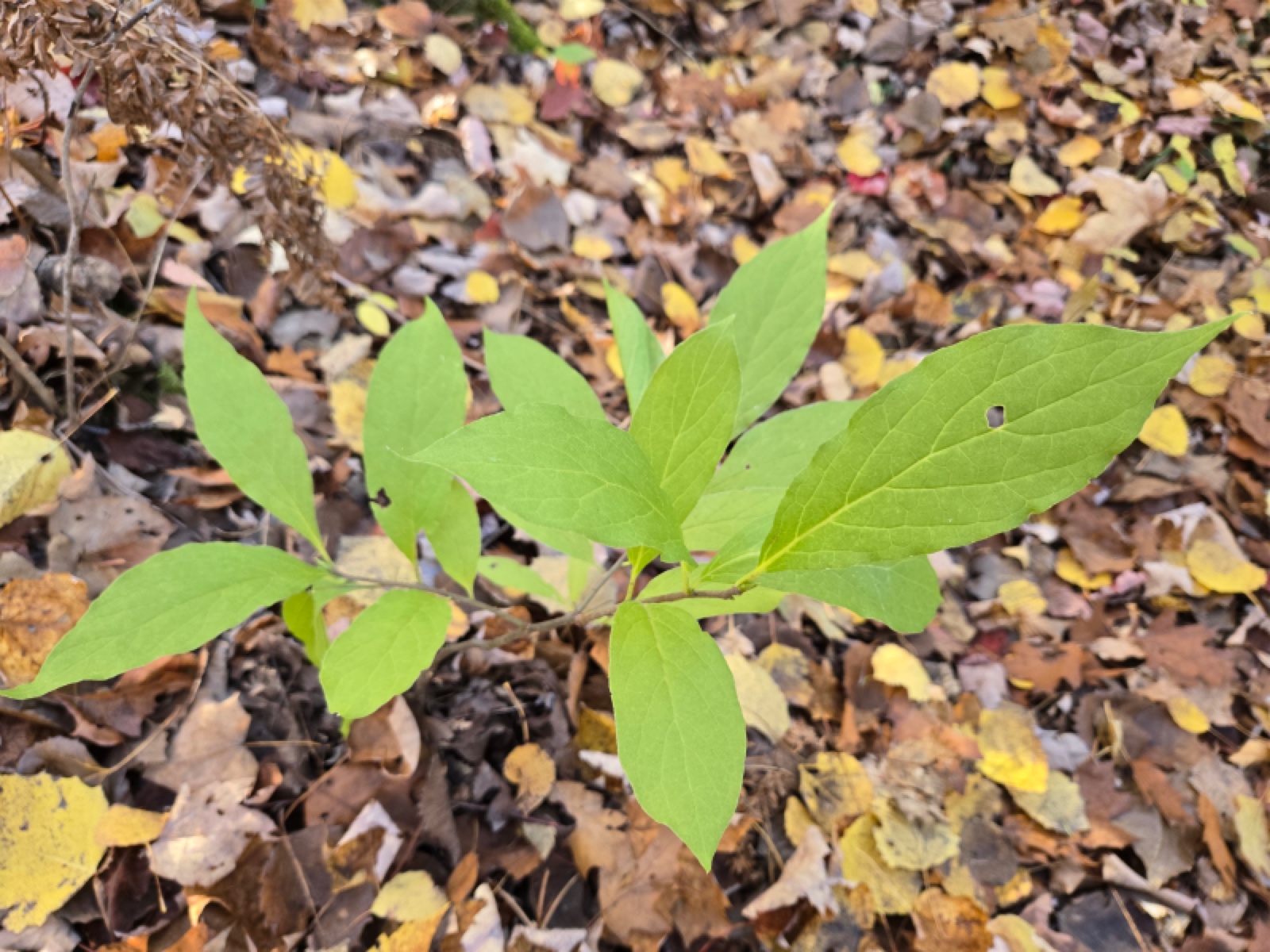
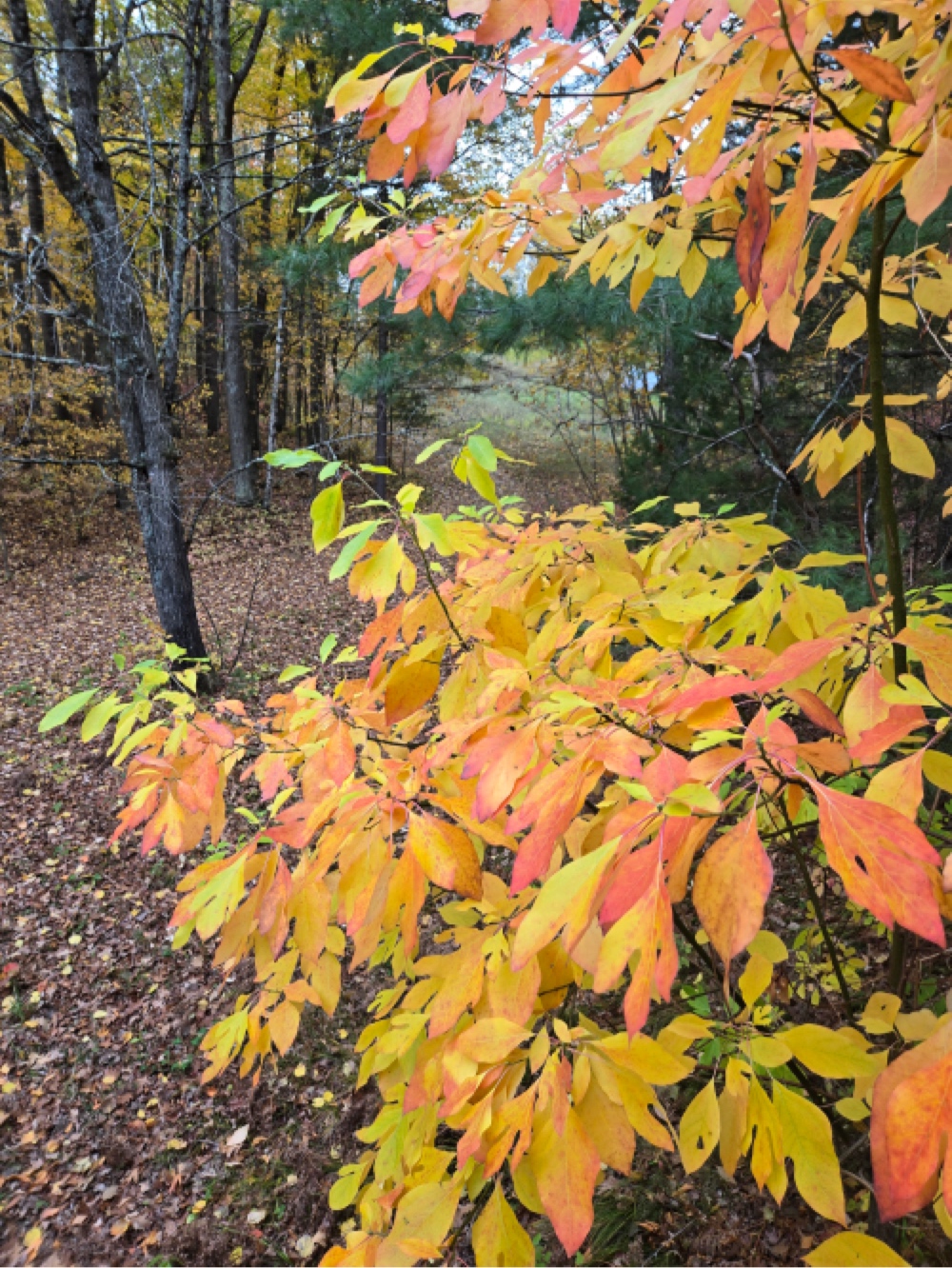
L to R: Pyrularia pubera • Sassafras albidum
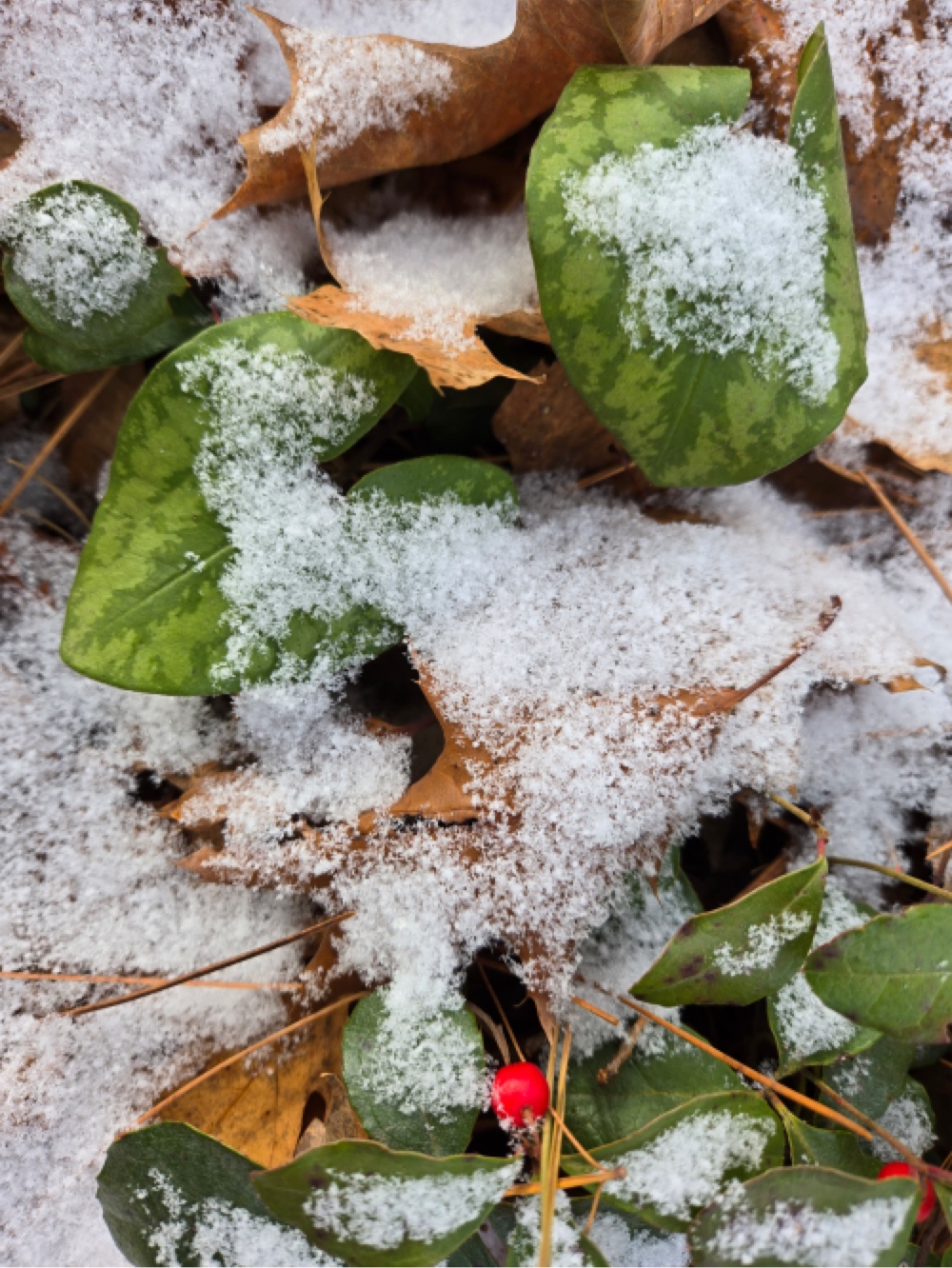
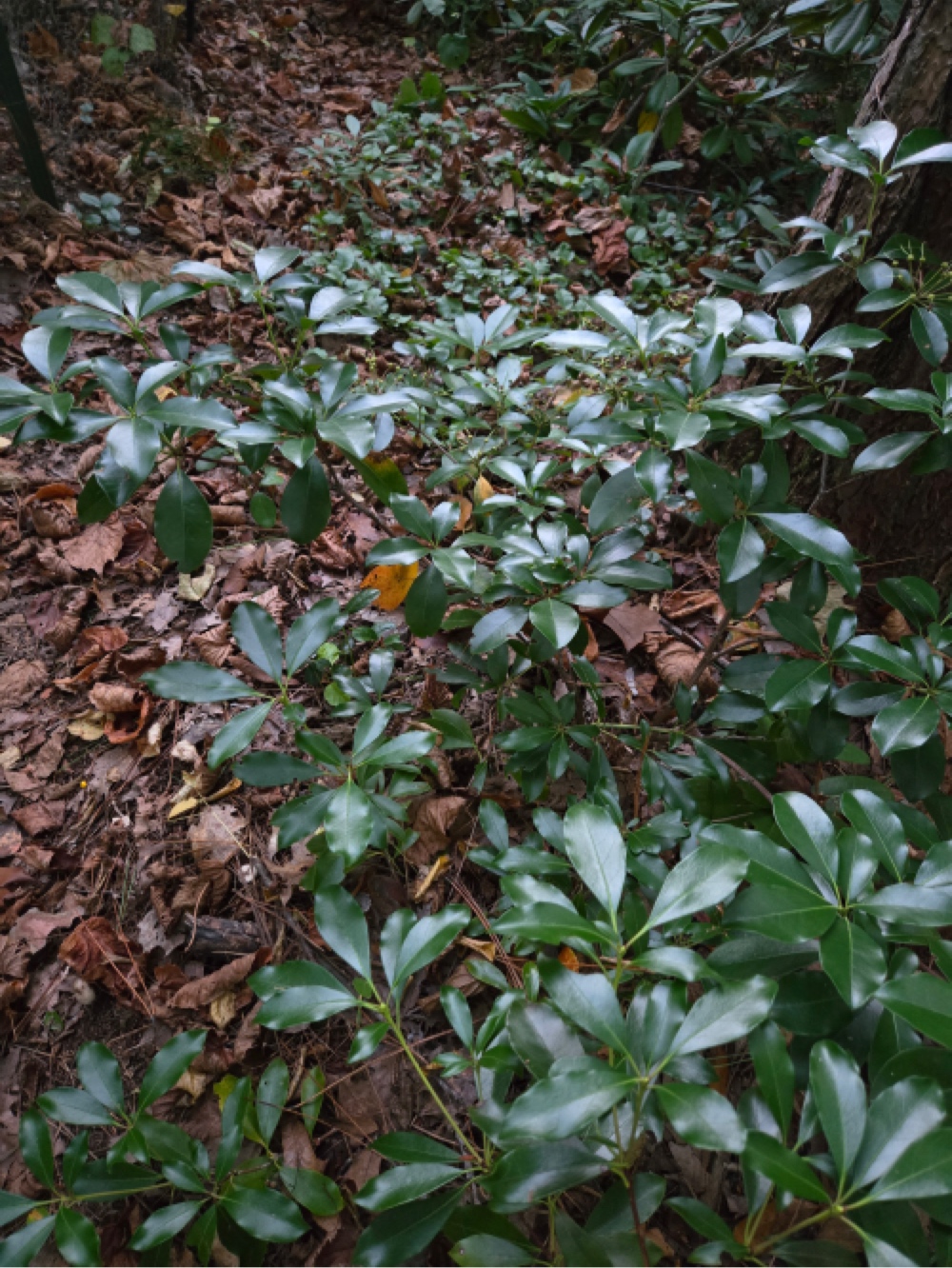
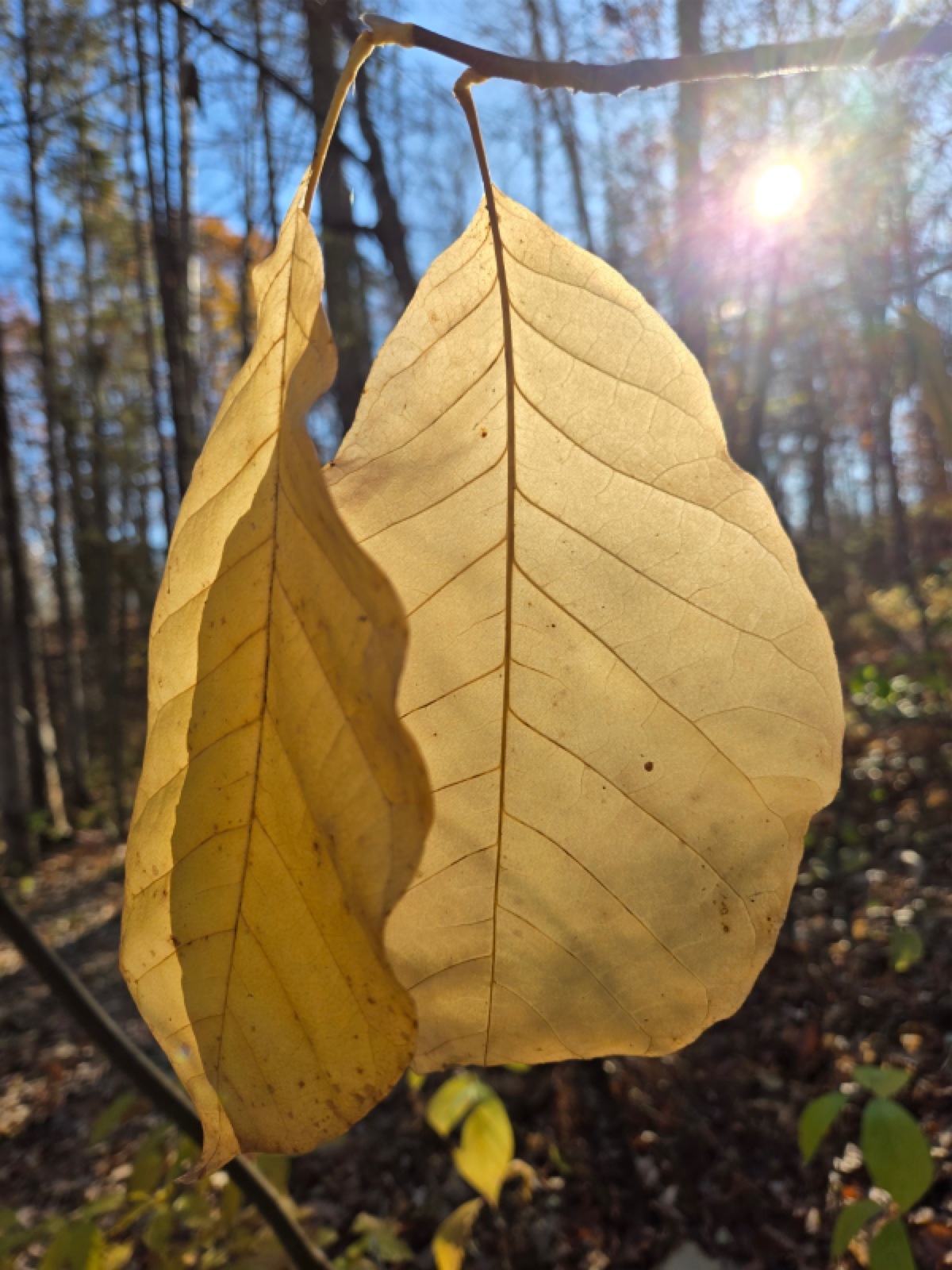
L to R: Asarum arifolium • Kalmia latifolia • Magnolia acuminata
Return to HOME PAGE
|































